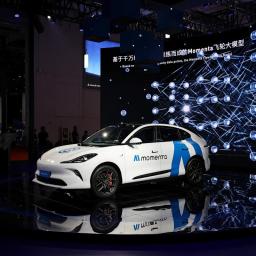 |
by Steve Dent on (#6ZWBY)
Uber and its new partner Momenta will start testing an autonomous ride-sharing service in Europe in 2026, Momenta announced. The service will kick off in Munich, Germany using Momenta's self-driving tech and Uber's ride-sharing platform, with the goal of future European expansion. The companies chose Munich to kick off the operation due to the city's "deep-rooted engineering heritage, top-tier automotive ecosystem and openness to innovation," Momenta said.Momenta and Uber announced a "strategic agreement" in May this year to launch a robotaxi service with safety drivers aboard to start with. Momenta was one of China's first autonomous vehicle companies and has been testing self-driving cars in the nation since 2018, with plans to roll out a commercial operation at its base in Shanghai next year. It also builds ADAS (advanced driver assistance systems) for major automakers including Mercedes-Benz and Audi, with over 400,000 installed to date.Europe has been slower than the US and China to adopt self-driving taxis, but that has started to change. Uber will be competing with Baidu, which announced plans to start testing its Apollo Go self-driving service in Switzerland as early as this year. Another company, WeRide, launched its own pilot program in Switzerland in January 2025 and started testing a driverless shuttle system in France shortly after that.Elsewhere, Uber has partnered with other self-driving vehicle companies including WeRide, Pony.AI and Momenta in the Middle East. It also has a deal with UK-based Wayve to launch self-driving ride sharing trials in London next year, and recently said it would offer ride-sharing services in Los Angeles using an autonomous version of Volkswagen's ID. Buzz.Uber and Momenta's Munich service will use Level 4 self-driving vehicles that can be operated without a safety driver in preset geographical areas. The companies will need to obtain certification from the German government and approval for the "geofenced zones" where it's allowed to operate.Uber originally planned to build its own self-driving cars but abandoned the idea in 2020 following the death of a pedestrian and scandal around alleged trade secret theft from Waymo. Since then, it has taken the route of partnering with autonomous vehicle manufacturers, including the aforementioned Waymo in Austin and Atlanta.This article originally appeared on Engadget at https://www.engadget.com/transportation/uber-and-partner-momenta-will-start-testing-robotaxis-in-europe-next-year-123058509.html?src=rss
|
 Engadget is a web magazine with obsessive daily coverage of everything new in gadgets and consumer electronics
Engadget is a web magazine with obsessive daily coverage of everything new in gadgets and consumer electronics
| Link | https://www.engadget.com/ |
| Feed | https://www.engadget.com/rss.xml |
| Copyright | copyright Yahoo 2026 |
| Updated | 2026-01-05 00:47 |
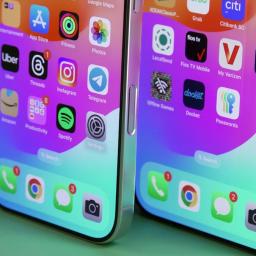 |
by Igor Bonifacic on (#6ZW9J)
In 2020, I bought an iPhone 12 to replace my aging Pixel 3, and nearly five years later, I'm still using that same device because it works fine and Apple has yet to bring the feature I want most on a regular iPhone: a ProMotion display. If you're not familiar with the company's marketing lingo, ProMotion is its way of describing a high-refresh rate display.Apple introduced ProMotion with the iPhone 13 Pro. Since then, every Pro model has offered a 120Hz refresh rate display with the ability to scale down to 1Hz for always-on functionality. That's great for gaming and day-to-day use; higher refresh rates make every interaction on the iPhone's touchscreen look and feel smoother. In fact, high refresh rate displays are such a well-liked feature that most Android manufacturers have begun offering them on their entry-level devices, but it's still something you need to spend $1,000 to get on an iPhone..If you ask me, that's a problem for Apple. The closest I got to upgrading was in 2023 when it released the iPhone 15, which was the first regular model to include the company's Dynamic Island display cutout after it debuted on the iPhone 14 Pro. In the end, even the iPhone 15, with its better display, camera and USB-C charging, wasn't enough to convince me to part with the iPhone 12, because the new model didn't include a ProMotion screen. I imagine I'm not the only person who kept their old iPhone for the same reason.At this point, Apple's trickle-down strategy is painfully behind its competitors. In 2022, when display analyst Ross Young correctly predicted the entire iPhone 15 would offer Dynamic Island displays, he said the company likely wouldn't bring ProMotion to its regular iPhones until 2024 at the earliest. He blamed the timing on a supply chain that "[couldn't] support" the feature on Apple's more affordable handsets. Whether or not that was true, I don't know. In 2020, the same year Apple released the $799 iPhone 12, Google came out with the $700 Pixel 5, which came with a 90Hz OLED.Either way, it appears my long wait is about to come to an end, with all four 2025 iPhone models - the iPhone 17, 17 Pro, 17 Pro Max and new iPhone 17 Air - reportedly set to offer 120Hz displays. For me, this is the year I upgrade, but I do wonder what it means for the future of the iPhone line.If I had to guess, Apple's decision to hold off on bringing ProMotion to the regular iPhone had more to do with the company wanting to give people a reason to spend extra on a Pro model than the limits of one of the largest and most efficient supply chains on the planet. If the pre-release rumors turn out to be true, the iPhone 17 will leave the iPhone Pro in an awkward place. With ProMotion gone as a differentiating feature and the Pro and Pro Max rumored to be made from aluminum again, there aren't many reasons to go for the more expensive models other than if you want a telephoto camera or a bigger display in the case of the Pro Max.I suspect this may be the last year we see an iPhone Pro, at least in the format we know it as now. When Senior Editor Devindra Hardawar and I got a chance to talk to Bloomberg's Mark Gurman during a recent episode of the Engadget podcast, he mentioned that Apple plans to go all in on the iPhone Air. At first, it may offer only a single camera and worse battery life than its siblings, but Gurman said Apple was confident it could further shrink those components over time and make the Air the equal of its current devices.In other words, the iPhone Air might be a side project now, but it's easy to envision a future where it becomes the company's flagship. Maybe it's wishful thinking, but I'm hopeful Apple plans for a future where the Air and regular iPhone offer similar features, but the company charges a premium for getting those in a sleeker package.This article originally appeared on Engadget at https://www.engadget.com/mobile/smartphones/if-the-iphone-17-doesnt-get-promotion-i-wont-be-upgrading-my-iphone-12-120030630.html?src=rss
|
 |
by Cheyenne MacDonald on (#6ZVXY)
Japanese toymaker Takara Tomy is releasing a Poke Ball virtual pet toy so you can fulfill your dreams of carrying your favorite Pokemon around with you everywhere. I don't know how this one slid under my radar when it was announced at the end of August (perhaps because all my attention has been on Tamagotchi Paradise) but now that I've seen it, I must have it. While it appears to be a Japan-only release, the product page shows it will have an English language option in the menu. Pre-orders are open (though currently sold out on Amazon Japan), and the device will ship on October 11, according to Essential Japan.The toy costs 7,480 or about $51 - but I shudder to think how much that number will jump with tariffs factored in. Per the listing, there are seven partner Pokemon you can care for: Pikachu, Eevee, Sprigatito, Fuecoco, Quaxly, Lucario and Sylveon. And if you pet the device, they'll react. There are also 150 other Pokemon to interact with, though it's unclear what the extent of those interactions will be beyond battles (and... washing?). Regardless, l hope Wooper is one of them.This article originally appeared on Engadget at https://www.engadget.com/gaming/this-pettable-poke-ball-is-a-tamagotchi-style-toy-with-over-150-pokemon-inside-and-i-need-it-now-215047740.html?src=rss
|
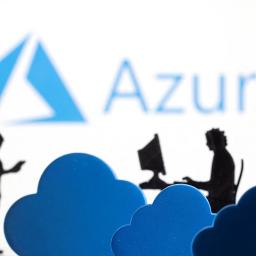 |
by Jackson Chen on (#6ZVWB)
Microsoft said its Azure cloud platform has returned to normal service after an incident of cut underwater cables that played out over Saturday. The tech giant reported "undersea fiber cuts" in the Red Sea on Saturday morning, which disrupted Azure service throughout the Middle East and led to potential "increased latency" for users. Microsoft said that the latency issue was resolved by Saturday evening and was able to reroute the Azure traffic through other paths.Microsoft didn't provide a reason for why the undersea cables were cut. These cables sit on the ocean floor and play the crucial role of delivering massive amounts of data across the world. While ships dropping anchors can sometimes damage undersea cables, there have been more intentional circumstances in the past. In 2024, the internationally recognized government of Yemen claimed that the country's Houthi movement was responsible for cutting cables in the Red Sea. While Microsoft managed to restore service for its latest episode the same day, it also noted that undersea cable cuts "can take time to repair" and that it "will continuously monitor, rebalance, and optimize routing to reduce customer impact in the meantime."This article originally appeared on Engadget at https://www.engadget.com/big-tech/microsofts-cloud-service-restored-after-reports-of-cut-cables-in-the-red-sea-192312354.html?src=rss
|
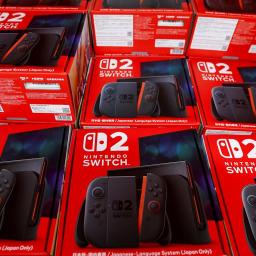 |
by Jackson Chen on (#6ZVV5)
Nintendo has just won another major battle in its longstanding war against piracy. Earlier this summer, a US federal court ruled in favor of Nintendo in a lawsuit against Ryan Daly and the Modded Hardware website. The site was known for selling devices that allowed users to get around Nintendo's piracy protections, including the popular MIG Switch flashcart that lets buyers play official Nintendo games without the need for a physical cartridge. Besides requiring Daly to pay $2 million to Nintendo, the lawsuit requires him to shut down the website and forfeit the domain to Nintendo as part of an all-encompassing permanent injunction.The order also prevents Daly from any future involvement with devices that get around Nintendo's guardrails, including creating, selling, contributing to, hosting other websites related to or investing in other businesses that deal in similar products. While MIG flash carts could be used as a backup for legally purchased physical games, it was more commonly used to pirate official Nintendo Switch titles. Nintendo has steadily fought against mods and pirating tools, including recently granting itself the power to brick Switches that have pirated games on them.Nintendo is no stranger to taking legal action against those who defy its strict policies. In March of last year, Nintendo filed a lawsuit against the makers of the Yuzu emulator. The suit was settled quickly, with the team behind the Nintendo Switch emulator agreeing to pay $2.4 million. Like the lawsuit against Daly, the team behind Yuzu had to surrender its website and permanently refrain from doing any activities that bypass Nintendo's rules.This article originally appeared on Engadget at https://www.engadget.com/gaming/nintendo/nintendo-wins-a-2-million-lawsuit-against-popular-switch-modding-webstore-174528989.html?src=rss
|
 |
by Jackson Chen on (#6ZVSV)
For most Hollow Knight: Silksong players, the combat is challenging and the boss fights are punishing. However, there's another layer of complexity for anyone playing the sequel in Simplified Chinese: the bizarre translations. On its Steam store page, Silksong currently sits at a "Mostly Positive" rating across reviews in all languages. Once you filter for the Simplified Chinese reviews, the Metroidvania-style game plummets to "Mostly Negative."There are plenty of complaints about Silksong being too hard and not rewarding enough, but the translation issues are a common theme across the reviews for Simplified Chinese. In the reviews and comments, players compared the translations to a jarring mix of ancient and modern Chinese. Tiger Tang, who worked on the Simplified Chinese translation of an indie RPG called OMORI, posted on X that the "translation reads like a Wuxia novel instead of conveying the game's tone," referencing the literary genre that features martial arts and is often set in ancient China.The good news is that the team behind Silksong is aware of the translation issues, as indicated by Matthew Griffin, who handles the game's marketing and publishing. Griffin posted on X that the team is aware of "quality issues with the current Simplified Chinese translation" and that they are "working to improve the translation over the coming weeks." When looking at the original Hollow Knight, the reviews are overwhelmingly positive, even when looking at the Simplified Chinese reviews. However, Silksong credits a team of two for its Chinese localization, while the original featured six.This article originally appeared on Engadget at https://www.engadget.com/gaming/silksong-reviews-drop-to-mostly-negative-for-chinese-players-due-to-confusing-translations-162631762.html?src=rss
|
 |
on (#6ZVRF)
While scientists are still working to understand the effects an extended trip to space can have on the human body, research in recent years has suggested that astronauts may experience some pretty dramatic changes on both the physiological and psychological levels. In the latest study led by a team at University of California San Diego, researchers found signs of accelerated aging in human stem cells that spent roughly a month in space.The research focused on hematopoietic stem and progenitor cells (HSPCs), which are crucial in the formation of blood and immune cells. Stem cells were sent to the International Space Station for stays of 32-45 days using specially developed nanobioreactors to monitor them. Another set remained on Earth at the Kennedy Space Center. The cells that went to the ISS showed a host of changes, including reduced self-renewal abilities, greater susceptibility to DNA damage and inflammation in the mitochondria. However, the damage didn't appear to be permanent. The team notes that the changes were at least partially reversed when the cells were removed from the space environment.Space is the ultimate stress test for the human body," Catriona Jamieson, director of the UC San Diego Sanford Stem Cell Institute, said in a statement. These findings are critically important because they show that the stressors of space - like microgravity and cosmic galactic radiation - can accelerate the molecular aging of blood stem cells. Understanding these changes not only informs how we protect astronauts during long-duration missions but also helps us model human aging and diseases like cancer here on Earth."This article originally appeared on Engadget at https://www.engadget.com/human-stem-cells-age-more-rapidly-in-space-study-finds-145651426.html?src=rss
|
 |
by Jackson Chen on (#6ZVB3)
The Square Enix team behind Final Fantasy Tactics - The Ivalice Chronicles didn't just remaster the iconic strategy RPG, they had to go through the trouble of remaking the source code from scratch, according to Bloomberg. In an interview with Bloomberg's Jason Schreier, the game's director Kazutoyo Maehiro explained the arduous process of designing The Ivalice Chronicles, which is set to release at the end of the month.When getting to work on the remake, Maehiro and his team discovered they had to rebuild the source code from the ground up since it was lost thanks to the industry's unstandardized practices in the '90s, according to Bloomberg. When translating Final Fantasy Tactics from Japanese to English for the global release, the company would overwrite the original Japanese version's code. For Maehiro, that meant the team had to undertake a ground-up overhaul and recreate the source code by playing the original game that released in 1997, consulting the game's master disc and looking at the 2011 version called Final Fantasy Tactics: The War of the Lions, according to Bloomberg. Maehiro also said during a PAX West 2025 panel that the team gleaned a lot of lost info from fan-made databases.Revealing more of the behind-the-scenes decisions for The Ivalice Chronicles, Maehiro told Bloomberg about the debate surrounding Count Cidolfus Orlandeau. Better known as Cid, and appropriately nicknamed Thunder God Cid, this overtuned character joins you later in the game, but many fans complained about him being overpowered. Instead of nerfing Cid, Maehiro told Bloomberg that keeping this character's power level the same would better represent the storyline since "his role in the story is being that very powerful character who joins your party." To quell any concerns of Cid being too broken, Maehiro told Bloomberg that the team decided to buff the other characters to even things out. Looking ahead, Maehiro also hinted at exploring sequels for the Final Fantasy Tactics franchise or even brand new games in the strategy RPG genre, given that The Ivalice Chronicles does well, according to Bloomberg.This article originally appeared on Engadget at https://www.engadget.com/gaming/the-ivalice-chronicles-team-had-to-remake-the-original-final-fantasy-tactics-source-code-from-scratch-190253342.html?src=rss
|
 |
by Jackson Chen on (#6ZV9H)
Starting September 9, Porsche and Audi will be the latest non-Tesla brands to utilize the Supercharger network. The two automakers announced that some of their owners will get adapters that allow them to charge via the NACS port, which Tesla developed and opened up to other automakers. The rollout comes after the Volkswagen Group, which owns both Porsche and Audi, announced that it would implement NACS compatibility for Volkswagen, Audi, Porsche and Scout Motors in December 2023.Porsche / Ashton StanPorsche is kicking off its NACS adoption with a "soft launch," where existing owners of Taycan and Macan Electric models have to reserve a free NACS to DC adapter with the My Porsche app to connect to the Tesla Supercharger network. During this initial phase, drivers of compatible Porsche EVs have to use the Tesla app at Superchargers, but will eventually be able to charge with the My Porsche app in "the coming months," according to Porsche. Like Porsche, Audi is getting its own branded adapter that will arrive with newer 2025 model year options, including its Q6 e-tron, A6 Sportback e-tron and e-tron GT. Notably, Audi said its Q4 e-tron won't currently have access to Tesla Superchargers.For Porsche, any Taycan and Macan Electric from model year 2026 onward will include a free NACS adapter. However, Porsche EVs from model year 2024 or older will have to buy the adapter from Porsche's online shop or dealerships, which will go for $185. Porsche and Audi are also working on software updates to show Tesla Superchargers on their navigation systems. Despite Porsche and Audi now gaining access to the Supercharger network, Volkswagen Group's other subsidiaries, including Lamborghini and Bentley, still haven't committed to adopting NACS.This article originally appeared on Engadget at https://www.engadget.com/transportation/evs/porsche-and-audis-evs-can-now-recharge-on-any-tesla-supercharger-in-north-america-173333649.html?src=rss
|
 |
on (#6ZTV3)
Mark Zuckerberg has certainly come a long way in his relationship with President Donald Trump. Almost exactly a year after the president threatened the Meta CEO with imprisonment, the two sat side-by-side at a White House dinner, alongside numerous other tech CEOs.The nearly three dozen CEOs and execs in attendance took turns praising and thanking Trump. But Zuckerberg's comments were especially notable. In one moment that was widely shared on social media, Trump turns to Zuckerberg and asks "how much are you spending, would say, over the next few years?" Zuckerberg responded that it was "probably going to be something like, I don't know, at least $600 billion through [20]28 in the US." Trump seemed to approve. "That's a lot, thank you Mark, it's great to have you."But it was a hot mic moment captured later between the two that was especially telling. Zuckerberg, turning to Trump, apologizes and says "sorry, I wasn't ready ...I wasn't sure what number you wanted to go with."You can watch the whole moment play out in the clip below:
|
 |
by Cheyenne MacDonald on (#6ZV9J)
8BitDo makes some of our favorite gaming accessories, and right now you can get one of its Nintendo Switch 2 controllers for the lowest price we've seen yet. A deal on Amazon shaves 14 percent off the 8BitDo Ultimate 2 controller's usual $70 price tag, bringing it down to $60 - and with a coupon you can apply before checkout, it drops a bit more to $54. The discount only applies to the white color option. The Ultimate 2 Bluetooth controller is one of the best Switch 2 accessories out there. (It's also compatible with PC). This controller has TMR joysticks for greater sensitivity and durability, and has trigger mode switches to flip between linear Hall Effect triggers and non-linear tactile triggers. It's a great option for those who prefer an Xbox-style controller. The Ultimate 2 charges on an included charging dock, and it'll automatically reconnect to the console when you pick it up. It's also customizable using the Ultimate Software, so you can adjust the button mapping, joystick and trigger sensitivity, vibration and more. It offers three custom profiles so you can save the different configurations. You can play around with the visual effects too. The Ultimate 2 controller has RGB rings around the joysticks with multiple lighting modes to choose from, including Fire Ring Mode, Light-tracing and Rainbow. You can further adjust the colors with the Ultimate Software as well. It's a versatile controller that offers a lot of bang for your buck. If you've been thinking about picking up a good third-party controller for your new Switch 2, you can't go wrong with the Ultimate 2. Follow @EngadgetDeals on X for the latest tech deals and buying advice.This article originally appeared on Engadget at https://www.engadget.com/deals/8bitdos-ultimate-2-controller-for-switch-2-is-on-sale-for-only-54-170940439.html?src=rss
|
 |
by Mariella Moon on (#6ZV88)
Two authors have filed a lawsuit against Apple, accusing the company of infringing on their copyright by using their books to train its artificial intelligence model without their consent. The plaintiffs, Grady Hendrix and Jennifer Roberson, claimed that Apple used a dataset of pirated copyrighted books that include their works for AI training. They said in their complaint that Applebot, the company's scraper, can "reach 'shadow libraries'" made up of unlicensed copyrighted books, including (on information) their own. The lawsuit is currently seeking class action status, due to the sheer number of books and authors found in shadow libraries.The main plaintiffs for the lawsuit are Grady Hendrix and Jennifer Roberson, both of whom have multiple books under their names. They said that Apple, one of the biggest companies in the world, did not attempt to pay them for "their contributions to [the] potentially lucrative venture." Apple has "copied the copyrighted works" of the plaintiffs "to train AI models whose outputs compete with and dilute the market for those very works - works without which Apple Intelligence would have far less commercial value," they wrote in their filing. "This conduct has deprived Plaintiffs and the Class of control over their work, undermined the economic value of their labor, and positioned Apple to achieve massive commercial success through unlawful means."This is but one of the many lawsuits filed against companies developing generative AI technologies. OpenAI is facing a few, including lawsuits from The New York Times and the oldest nonprofit newsroom in the US. Notably, Anthropic, the AI company behind the Claude chatbot, recently agreed to pay $1.5 billion to settle a class action piracy complaint also brought by authors. Similar to this case, the writers also accused the company of taking pirated books from online libraries to train its AI technology. The 500,000 authors involved in the case will reportedly get $3,000 per work.This article originally appeared on Engadget at https://www.engadget.com/ai/apple-faces-lawsuit-over-alleged-use-of-pirated-books-for-ai-training-160016161.html?src=rss
|
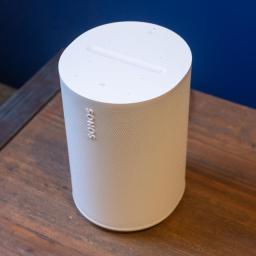 |
by Sarah Fielding on (#6Z90S)
No matter how old you get, the back-to-school season will always bring a desire to shop. So, sales at this time of year are always more than welcome - especially when they're on some of our favorite devices. Such is the case with the 20 percent discount on the Sonos Era 300. The spatial-audio speaker is on sale for $359 right now, down from $449. It's part of a larger sale that's both for Labor Day and back to school, discounting speakers, soundbars and more by up to 20 percent. The same price is available on Amazon, as are some more deals on Sonos products. Sonos debuted the Era 300 in 2023 as its main spatial audio offering, and we found it to have excellent sound quality, a simple setup process and Trueplay tuning that's super easy to use. It works with basically any music streaming service you could have, and if you simply must have spatial audio support in your next speaker, you'll be hard pressed to find a better option. It's worth mentioning that the Sonos Ace headphones are also on sale for $299, down from $399 - a 25 percent discount. The headphones have come a long way since they first launched, including the introduction of TrueCinema, which works with a Sonos soundbar to create the best spatial audio experience. Follow @EngadgetDeals on X for the latest tech deals and buying advice.This article originally appeared on Engadget at https://www.engadget.com/deals/sonos-latest-sale-knocks-20-percent-off-the-era-300-speaker-125211458.html?src=rss
|
 |
by Alessandro Fillari on (#6ZV6R)
The Pokemon series has had staying power ever since its debut in the 1990s, but it has felt especially popular in recent years, thanks to Pokemon GO and the resurgence of the trading card game. Given that more Pokemon fans are experiencing new ways to play, it's the right time for developer Game Freak to refresh the video game series. The upcoming Pokemon Legends: Z-A looks to do just that with a more action-oriented focus on a Pokemon trainer's journey.At a special Nintendo showcase during PAX West 2025 in Seattle, I spent some limited time with Pokemon Legends: Z-A and its revamped combat system that ditches turn-based combat for real-time action. So far, this new entry in the long-running series is showing promise for a follow-up that could shake up the pokemon meta in the right direction.Set in the Paris-inspired Lumiose City, Pokemon Legends: Z-A focuses on a new trainer coming into their own as they improve their skills and expand their roster of pokemon. However, Lumoise City has a darker mystery brewing after an unknown force is causing several pokemon to enter a frenzied state that triggers their Mega Evolution mysteriously. As the protagonist rises in the ranks, they'll soon come to find out what's behind the rise of rogue pokemon.Speaking as a lapsed Pokemon fan who occasionally revisits the series for its more interesting entries, I've found that Pokemon games tend to be very familiar, stopping a few steps shy of reaching a broader scope that many players have imagined Pokemon games to be since watching the animated shows.Recent Pokemon games like Legends: Arceus and Scarlet/Violet have moved the series forward in the right ways, and Legends: Z-A is continuing that trend by focusing more on the moment-to-moment actions of being a trainer.Real-time combat is a significant game changer in Legends: Z-A, and it's a shift that many returning players will need to adjust to. Arceus set the foundations of a more open-ended style of player activity, but it still reverted to the turn-based tactical approach when the combat kicked in. Legends: Z-A moves away from that.The demo started with a nighttime training session, in which I had to engage in several pokemon fights with trainers in a designated battle zone in the back alleys of the city. This led me to round corners and find trainers waiting for a fight, employing either a direct approach or more sneaky methods.During my demo, I was given the team of Chikorita, Weedle, Mareep, and the flying pokemon Fletchling. When you engage in a fight, your trainer stays locked onto their enemy pokemon, with your chosen fighter right at your side. During these fights, you move around in real-time and have active skills that are on cooldowns. This sounds pretty standard for games, but for a Pokemon game, it's quite the adjustment, one that I really liked after a few matches.What's interesting about Pokemon Legends: Z-A is that it's turned Pokemon into an action RPG, somewhat akin to a smaller-scale Xenoblade Chronicles. In addition to having to engage the right skills at the right time, I also had to dodge enemy attacks to keep my pokemon from taking heavy damage. This action-focused approach gives you far more options in how you want to engage enemies, and there are even opportunities to sneak up on unsuspecting trainers to engage in a sneak attack to start the fight off well. It seems odd at first, but it's honestly quite amusing to see trainers get walloped by a pokemon's attacks.NintendoThe next phase of the demo focused on another of Pokemon Legends: Z-A's other innovations - boss fights with rogue pokemon. As you start to track them down, you'll eventually face off against them in battle, and they'll even activate their Mega Evolved forms. The boss fight I encountered with Rogue Mega Absol felt right out of other role-playing games, like Final Fantasy or Nier: Automata, and Legends: Z-A presents them as showstopping encounters where you have to subdue these powerful enemies in a special battle zone. The battle was made especially exciting was the addition of the pokemon Lucario joining the fight.I could also activate their own Mega Evolution for a temporary buff - like Final Fantasy's limit breaks, but for pokemon.Pokemon Legends: Z-A, much like its predecessor Arceus, takes a new approach to a traditional Pokemon adventure, focusing on interactive exploration and engagement with the world. I liked how it felt like a stylized JRPG, with the addition of quirky side characters and an epic boss fight to clear. It's very strange to play a Pokemon RPG without turn-based combat, but I found its most laid-back approach to be fair and engaging.There has often been a desire among Pokemon fans that the series needs a shake-up to reach greater heights, but it has been clear that this is an ongoing process and won't happen all at once. Pokemon Legends: Z-A does hang onto the familiar premise of a trainer's journey in the Pokemon world, but a more action-oriented approach to commanding your Pokemon does show some solid promise, and could very well be a strong step forward for the series. And as a lapsed Pokemon fan, it's definitely one I'll be keeping an eye on.Pokemon Legends: Z-A will be released on October 16, 2025 for the Nintendo Switch and Switch 2.This article originally appeared on Engadget at https://www.engadget.com/gaming/nintendo/pokemon-legends-z-a-hands-on-135651443.html?src=rss
|
 |
by Kris Holt on (#6ZV4F)
Welcome to our latest recap of what's going on in the indie game space. Folks, it's here. You know it's here. So, we'll touch on it, but briefly. Some developers and publishers opted not to delay their games out of this week (others have done that to get some breathing space from you-know-what), so there are several other newcomers to highlight.Before we get there, there's a sale worth mentioning on a PC storefront that does not offer Hollow Knight: Silksong. The Epic Games Store's End of Summer Sale is running until September 18 and there are some pretty solid deals. Cyberpunk 2077is 65 percent off for the base game and 50 percent off for the ultimate edition, which includes the Phantom Liberty DLC (which is also 30 percent off for those who have the base game already).Other discounts of note include Red Dead Redemption 2 (75 percent off), Grand Theft Auto V Enhanced (50 percent off), Assassin's Creed Shadows (33 percent off), The Witcher 3: Wild Hunt - Complete Edition (80 percent) and Alan Wake 2 (70 percent off). A bunch of PlayStation games are on sale too, including Marvel's Spider-Man 2 (20 percent), The Last of Us Part 1 (50 percent), Ghost of Tsushima Director's Cut (33 percent), God of War (60 percent off) and God of War Ragnarok (20 percent). You'll get 20 percent back in Epic Rewards on your purchases too.The Epic Games Store offers totally free games every week (no need to have a subscription for those!), and the freebies tend to be for well-known games whenever there's a major sale on the store. Right now, you can pick up an all-timer in Monument Valley for exactly zero dollars. You have until 11AM ET on September 11 to claim the classic puzzle game. When that game cycles out, Epic Games will rotate three more titles into its lineup: Monument Valley 2, Ghostrunner 2 (which I enjoy very much but am terrible at) and a strategy game called The Battle of Polytopia. Again, you'll have a week to claim those.Meanwhile, if you have an Amazon Prime subscription, there's usually a solid selection in the Prime Gaming library. Games you claim here are yours to keep forever, even if you don't maintain your Prime membership. Amazon offered up a particularly tasty one this week in the shape of Into The Breach, a hugely acclaimed strategy game, but there are plenty of others to check out. And speaking of games you can play right now...New releasesYes, Hollow Knight: Silksong is finally here. It's out on consoles and PC for $20 and it's included with Game Pass Ultimate and PC Game Pass. It's broken storefronts and probably some controllers that players have hurled at the wall after dying to a tough boss.After a seven-year wait, Silksong is by some distance the highest-profile indie game to arrive in 2025 so far. Perhaps if we start mentioning another long-awaited game - say, Kingdom Hearts 4? Beyond Good and Evil 2? - it may arrive sooner rather than later. Or in, like, another five years.I made a few attempts to play Hollow Knight, but bounced off quickly each time. I'll be sure to give Silksong a proper go, though.It might be the case that Silksong isn't quite your thing. Never fear, there's lots of other new stuff from this week for you to dive into.If a game pops up that reminds me of The Legend of Zelda: A Link to the Past (aka the best game of all time) in terms of looks, I'm duty bound to mention it. Fortunately, Rogue Labyrinth seems like it could be fun to play too. This action-narrative roguelite from Tea Witch Games and publisher indie.io hit Steam this week. It usually costs $15, but it's 20 percent off with a limited-time launch discount.Another thing that's very much in Rogue Labyrinth's favor is that your weapon is a smacking stick, which you can use to turn objects (including vanquished enemies) into projectiles. The combat is a blend of bullet-hell dodging and hack-and-slash action. Being a roguelike, there's randomization when it comes to things like the arenas, enemies and powers you'll encounter on each run. The game is also said to feature dynamic narrative systems and you'll forge alliances with other characters as you try to survive a lethal reality show.Although so many other indie games scrambled to get out of the way of Silksong, Hirogami stuck to its September 3 release date. I had to chuckle when a press release with a title of "3D origami platformer Hirogami refuses to fold" hit my inbox last week. An easy pun, but I appreciated it.Anyway, this is indeed a 3D platformer with an origami focus. You can flatten out your character into a sheet of paper so that a gust of wind can send you soaring to an elevated platform. You can transform into an armadillo to roll through enemies, an ape to explore treetops and a frog to jump higher. That seems like a real bananza of animal transformation options. Hirogami is available now on Steam, Epic Games Store and PS5.Fling to the Finish has been out on PC for some time, and now this co-op platform racing game from SplitSide Games and publisher Daedalic Entertainment has swung over to consoles. You and a friend are tethered by an elastic rope that will inevitably snag on parts of the environment. But you can actually use this to your advantage to swing your teammate onto a ledge or send you both hurling through the air.The obstacle-filled courses bring to mind Fall Guys, while the items that players can deploy to slow down race leaders remind me a bit of the Mario Kart games. Fling to the Finish does support solo play, as well as local and online multiplayer, where communication will be key (cross-play is available too). As was the case with Overcooked, you and your pal can play the game by sharing a single controller, which may make it easier to play the game in splitscreen if you're with a bunch of friends.Jetrunner is an action platformer in the vein of Ghostrunner and Neon White from Riddlebit Software and publisher Curveball Games. The folks behind it say it has "a gameplay loop that can be best described as Trackmania meets Titanfall." So, there are lots of comparisons to make here. Ultimately, you'll be parkouring your way through various courses while shooting targets, hooking onto grapple points and looking for shortcuts.Finding the optimal route - and, of course, actually completing it with as few errors as possible - is the path to climbing the global leaderboards. You can race against ghost replays of your previous runs for a clear visual comparison. In addition, there's a story mode that sees your character Nina (voiced by Sara Secora) trying to become a legendary jetrunner, with commentator Mick Acaster (Matthew Mercer) charting her progress. I'm digging the visuals here too.Jetrunner is out now on Steam and the Epic Games Store for $20 (there's a 10 percent launch discount on Steam). There's a speedrun contest that's taking place until September 11 with a $2,000 prize pool. You can snag a share if you can complete all of the campaign levels in a row quickly enough in the marathon mode and stick to the rules. It also seems that the exodus of other games this week due to Silksong helped Jetrunner gain extra visibility on Steam.UpcomingA rhythm RPG in which you can use your own music and manually adjust the BPM is interesting enough. But add giant, repurposed mechs to the mix, and now we're really cookin'. In Steel Century Groove, you'll compete in robot dance battles as you try to claim a championship. These mechanical beasts were used in warfare long, long ago. Now they're just literal groove machines.Steel Century Groove, which is from Sloth Gloss Games, is coming to Steam on January 28. A demo is available now, and your progress will carry over to the full game.When I was assembling the list of games to include in this week's roundup, I left myself a single, two-word note about The Legend of Baboo: "big floof." The floof in question is the large, titular dog that accompanies human hero Sepehr in this third-person action adventure from Permanent Way and publisher Midwest Games.You'll play as both characters as you take on enemies, solve puzzles and navigate treacherous lands. When you conquer bosses, you'll learn powerful magical attacks. Most importantly, you can zhush up Baboo with outfits and ornaments that you discover on your journey. He's the best boy and he deserves to look and feel good. It's also crucial to note that, as Sepehr, you can pet, ride and high-five Baboo.A release date (or even a release window) has yet to be announced for The Legend of Baboo. It's coming to Steam, Xbox One and Xbox Series X/S.Dreams of Another looks quite unlike any game I've seen before. It uses point cloud rendering tech for its remarkably pretty visuals. This fantasy exploration game from Q-Games (under the leadership of Baiyon, the director of PixelJunk Eden) is set in a dream-like world where you create the world by shooting at it.Dreams of Another is coming to PS5, PS VR2 and Steam on October 9, and it might just prompt me to set up my VR headset again. A demo dropped this week on Steam, but it's only available until September 16.Tombwater looks kinda rad. It's a 2D pixel-art Soulslike Western from Moth Atlas and publisher Midwest Games. The developers took (another?) leaf out of FromSoftware's playbook by pitting you against creepy eldritch horrors. This one is coming to Steam on November 12.I always appreciate when a labor of love comes to fruition. Former Uber, MapQuest and Microsoft engineer John Lansing said that, nine years ago, "I built a Final Fantasy Tactics inspired football prototype, and 691 commits later I am proud to present the Fantasy Football Tactics Demo!" This is a turn-based RPG in which the aim is to outscore your opponents rather than taking them out in combat.The demo hit Steam this week. There's no release date as yet for the full game.This article originally appeared on Engadget at https://www.engadget.com/gaming/silksong-smacking-sticks-and-other-new-indie-games-worth-checking-out-110020156.html?src=rss
|
 |
by Ian Carlos Campbell on (#6ZTV4)
Unity is updating its game engine to support native screen readers in both macOS and Windows. The feature is available now in the Unity 6000.3.0a5 alpha, and should make the process of making games accessible for blind players cheaper for developers, Can I Play That? writes.Screen readers narrate on-screen menus so blind and low-vision players can navigate a game or a piece of software without additional assistance. Typically, screen reading software is custom-built for each game, which can make them resource-intensive for developers to implement. "Building something like that from scratch has to be decided upon early in development so you have the time/resources allocated to make it properly," Steve Saylor, an accessibility consultant and creator, shared on Bluesky. "Having it in-engine can mean the heavy lifting is done for you, and the cost of time/resources now is significantly lower."Unity previously offered APIs for both Android and iOS' built-in screen readers in its Unity 6.0 release, but hadn't yet added support for Windows Narrator or macOS VoiceOver. With this new alpha and its eventual release as Unity 6.3, developers creating games with Unity will have access to a native screen reader in all of the engine's major platforms. Considering how popular Unity is as a game engine, that could vastly improve the accessibility of future games.This article originally appeared on Engadget at https://www.engadget.com/gaming/unity-developers-can-now-tap-into-system-screen-reader-tools-on-macos-and-windows-200348860.html?src=rss
|
 |
by Karissa Bell on (#6ZTRN)
Anthropic will pay a record-breaking $1.5 billion to settle a class action lawsuit piracy lawsuit brought by authors. The settlement is the largest-ever payout for a copyright case in the United States.The AI company behind the Claude chatbot reached a settlement in the case last week, but terms of the agreement weren't disclosed at the time. Now, The New York Times reports that the 500,000 authors involved in the case will get $3,000 per work.The settlement is "is the first of its kind in the AI era," Justin A. Nelson, the lawyer representing the authors, said in a statement. This landmark settlement far surpasses any other known copyright recovery. It will provide meaningful compensation for each class work and sets a precedent requiring AI companies to pay copyright owners. This settlement sends a powerful message to AI companies and creators alike that taking copyrighted works from these pirate websites is wrong."The case has been closely watched as top AI companies are increasingly facing legal scrutiny over their use of copyrighted works. In June, the judge in the case ruled that Anthropic's use of copyrighted material for training its large language model was fair use, in a significant victory for the company. He did, however, rule that the authors and publishers could pursue piracy claims against the company since the books were downloaded illegally from sites like Library Genesis (also known as "LibGen").As part of the settlement, Anthropic has also agreed to delete everything that was downloaded illegally and "said that it did not use any pirated works to build A.I. technologies that were publicly released," according to The New York Times. The company has not admitted wrongdoing.In June, the District Court issued a landmark ruling on AI development and copyright law, finding that Anthropic's approach to training AI models constitutes fair use," Anthropic's Deputy General Counsel Aparna Sridhar said in a statement. "Today's settlement, if approved, will resolve the plaintiffs' remaining legacy claims. We remain committed to developing safe AI systems that help people and organizations extend their capabilities, advance scientific discovery, and solve complex problems."This article originally appeared on Engadget at https://www.engadget.com/ai/anthropic-will-pay-a-record-breaking-15-billion-to-settle-copyright-lawsuit-with-authors-192800292.html?src=rss
|
 |
by Will Shanklin on (#6ZTRP)
With Hollywood video game adaptations surging, it was only a matter of time before Life is Strange got the treatment. After all, even platformer and sandbox game adaptations have (shockingly) found success in this new era. A well-written adventure game seems like a much shorter leap. Amazon announced on Friday that Prime Video has ordered a series based on the 2015 game.Like Don't Nod's classic, the series will blend angsty teenage realism with supernatural elements and moral choices. And Amazon's teaser synopsis points to a familiar storyline. "The story follows Max, a photography student, who discovers she can rewind time while saving the life of her childhood best friend, Chloe," the announcement reads. "As she struggles to understand this new skill, the pair investigate the mysterious disappearance of a fellow student, uncovering a dark side to their town that will ultimately force them to make an impossible life-or-death choice that will impact them forever."British writer and actor Charlie Covell (End of the F***ing World, KAOS) will chart the series' creative course. They'll serve as creator, executive producer and showrunner. Story Kitchen's Dmitri M. Johnson, Mike Goldberg and Timothy I. Stevenson will executive produce the show. Square Enix and LuckyChap are all part of the project, too. Amazon MGM Studios will produce it.Series showrunner Charlie CovellCharlie Covell / AmazonCovell wants the series to appeal to both newcomers and fans of the games. "It's a huge honor to be adapting Life Is Strange for Amazon MGM Studios," they said in Amazon's press release. "I am a massive fan of the game, and I'm thrilled to be working with the incredible teams at Square Enix, Story Kitchen and LuckyChap. I can't wait to share Max and Chloe's story with fellow players and new audiences alike."Amazon has been an eager participant in this new "Video Game Adaptations That Don't Suck" era. Earlier this week, it announced that Game of Thrones' Sophie Turner will step into Lara Croft's boots for its upcoming Tomb Raider series. Season two of Prime Video's acclaimed Fallout arrives later this year. Its first trailer teases the show's first appearance of the game's dreaded Deathclaws.Meanwhile, back in the gaming world, Square Enix is still churning out Life is Strange titles. In 2024, Max returned in Double Exposure, the first direct sequel to the original game's story. Don't Nod spun out its own spiritual sequel to the series, Lost Records: Bloom & Rage, earlier this year.This article originally appeared on Engadget at https://www.engadget.com/entertainment/streaming/amazon-greenlights-a-life-is-strange-series-adaptation-192145483.html?src=rss
|
 |
by Lawrence Bonk on (#6ZTRQ)
Meta is finally fixing how threads work on its social network Threads. Prior to this, there was no real way to know how long a thread was or even if a post was part of a longer discussion.The company has made "several changes that display threaded posts more clearly." These include a new "view more" label that indicates a post is part of a longer thread. This is an easy way to instantly know if someone's thoughts continue past an initial post.MetaThere's also a new design element that automatically stacks posts back-to-back when clicking into a series. Each of these posts now displays a number that shows its place in the thread, along with the total number of posts in a given thread. That sounds much easier than manually adding something like "part one of 12" to each post. These tools are rolling out soon for both mobile and web users.The platform recently reached the significant milestone of 400 million active monthly users. Meta has been busy adding new features to accommodate the growing audience, like the ability to attach lengthy text documents of up to 10,000 characters.This article originally appeared on Engadget at https://www.engadget.com/social-media/meta-is-fixing-threads-on-threads-190123221.html?src=rss
|
 |
by Ian Carlos Campbell on (#6ZTRR)
The European Commission has announced that it will fine Google 2.95 billion, or around $3.5 billion, for violating European Union antitrust laws and "distorting competition in the advertising technology industry." The decision follows a similar ruling from earlier in 2025, where a US federal judge concluded that Google maintains a monopoly in online advertising technology.Google displays ads in search results, but it also has a dominant position as a software provider for online advertisers and publishers looking to sell ad space and place ads. The Commission's main issue is with the way Google's ad buying tools (Google Ads and DV 360) interact with its ad exchange software (AdX) and ad publisher servers (DFP) in seemingly preferential ways. Google appears to favor its AdX ad exchange by "informing AdX in advance of the value of the best bid from competitors which it had to beat to win the auction," according to the Commission. It also found that "Google Ads was avoiding competing ad exchanges and mainly placing bids on AdX," maintaining the dominance of Google's ad exchange even if an alternative is a better option for advertisers.The Commission is giving Google 60 days to share how it plans to address those issues or face an "appropriate remedy" for violating antitrust law. That could just be the fine, but might also include a forced sale of some or all of Google's adtech business.Lee-Anne Mulholland, Google's Global Head of Regulatory Affairs, shared that the company will appeal the decision in the following statement provided to Engadget:
|
 |
by Will Shanklin on (#6ZTP6)
It's September 2025, and things are looking peachy keen. Sure, the US job market has taken a nosedive. And yeah, only one in four Americans believes they have a good chance of improving their standard of living. But hey, Tesla's board has proposed a pay package that could make Elon Musk the world's first trillionaire. What really matters is that someone is having a good time, right?Tesla's board laid out what's by far the biggest CEO compensation package in history on Friday. It reads like the ultimate dangled carrot for a leader who is both driven by wealth and power and also prone to distraction.The compensation plan is based on performance metrics that, at least for now, seem far-fetched. First, the Tesla leader would have to remain at the company for seven and a half years to cash in any shares. To receive the full payout, he'd have to stay for a full decade. Musk also runs a rocket company and an AI company (which also operates the former Twitter, aka X). So, above all else, the proposal is designed to keep his attention on the company that made him the world's richest person.For Musk to receive the full payout of around $900 billion, Musk would have to increase Tesla's market value to $8.5 trillion. It's worth about $1.1 trillion today. Other performance requirements include deploying a million Tesla robotaxis and a million AI robots. Musk would also be incentivized to participate in the company's long-term CEO succession plans. The package also includes structural protections to minimize stock price volatility, which the company has become well-acquainted with in 2025.Tesla recalled virtually all Cybertrucks earlier this year.Tesla"We believe that Elon's singular vision is vital to navigating this critical inflection point," Tesla board leaders Robyn Denholm and Kathleen Wilson-Thompson wrote in the shareholder letter. "We also recognize the formidable nature of this undertaking and, as a result, the importance of having a leader who is not only willing and capable but eager to meet this challenge. Simply put, retaining and incentivizing Elon is fundamental to Tesla achieving these goals and becoming the most valuable company in history."Denholm and Wilson-Thompson implied the package was at least partly motivated by the CEO threatening to jump ship. "Mr. Musk also raised the possibility that he may pursue other interests that may afford him greater influence if he did not receive such assurances," they wrote. "Ultimately, the Special Committee believed it to be critical to Tesla to secure Mr. Musk's commitment and focus to lead Tesla."Tesla shareholders will have to approve the pay package. They're expected to vote on it on November 6. A Delaware judge struck down a (similarly performance-based) 2018 package, and Tesla appealed. The new plan, if approved, would replace the older one if the appeal fails.If Musk hit all of the required benchmarks, his stake in Tesla would grow from 13 percent to 29 percent. Who says the American Dream isn't alive and well?This article originally appeared on Engadget at https://www.engadget.com/transportation/evs/teslas-board-to-elon-musk-hit-these-milestones-and-well-make-you-a-trillionaire-170914461.html?src=rss
|
 |
by Lawrence Bonk on (#6ZTP7)
Games Done Quick's all-women and femmes speedrunning event Flame Fatales kicks off on September 7 and goes until September 14. You can watch the marathon on the GDQ Twitch channel starting at 11:30AM ET.This is a week-long event, so the official schedule is packed with cool games. All told, there will be more than 50 speedruns. These will include recent hits like Blue Prince and Hades 2, in addition to classics like The Legend of Zelda: Twilight Princess. There's also going to be a one-handed speedrun of the original Hollow Knight, which is great timing considering the sequel just came out.That one-handed speedrun of Hollow Knight isn't the only goofy and unique entry in the mix. The speedrun of Blue Prince will include a bingo board and others will focus on boss rushes. It looks like a good time will be had by all.
|
 |
by Lawrence Bonk on (#6ZTK7)
OnePlus and Hasselblad are ending their five-year partnership, according to an official blog post. The smartphone maker has started developing its own camera system, which it has dubbed the DetailMax Engine.There was no reason given for the split, though OnePlus heaped praise on Hasselblad in that blog post. It lauded the camera maker's "obsession with precision and detail" and opined about "nights in the lab chasing the perfect balance of light and shadow." The company also said that "Hasselblad's refined aesthetic sense is now part of our imaging DNA, woven into every future OnePlus camera."OnePlusAs for every future OnePlus camera, the proprietary imaging system is still in the early stages. OnePlus CEO Pete Lau said he's already testing an early prototype that's been "designed from the ground up to deliver the clearest and most real photos on a smartphone."The two companies first paired up for the OnePlus 9 and 9 Pro flagship smartphones and the Hasselblad logo has been a mainstay of higher-end OnePlus devices since then. The Verge reports that the logo is likely to disappear with the release of the upcoming OnePlus 14, which may be renamed the OnePlus 15 to avoid the unlucky number "4" in China.There's one final wrinkle to this story. Oppo, which is the parent company of OnePlus, is sticking with Hasselblad for the time being. As a matter of fact, it officially extended the partnership back in July, with both companies promising a new mobile imaging system in the near future.This article originally appeared on Engadget at https://www.engadget.com/cameras/oneplus-and-hasselblad-are-ending-their-five-year-partnership-154217176.html?src=rss
|
 |
by Andre Revilla on (#6ZTK8)
Qualcomm's driver-assistance system Snapdragon Ride Pilot will debut on the BMW iX3 electric SUV, offering hands-free highway driving, automatic lane changes and parking assistance. The jointly developed software stack announced today will be powered by Snapdragon Ride system-on-chips and will make its first formal appearance at IAA Mobility 2025.Snapdragon Ride Pilot is a Level 2+ driver-assistance system, not self-driving, which means drivers will still be responsible for supervising the vehicle's movements and paying attention to the road while these features are in use.The software stack is structured into a series of layers that come together to power the autonomous features. The first is 360-degree perception, which uses a camera-based vision stack to detect objects, interpret traffic signs and provide parking assistance among other functions. An advanced context-aware driving layer uses a combination of rules-based and AI-based models to plan and predict behavior during complex driving scenarios.The stack also uses what Qualcomm is calling a safety-first approach, which includes cybersecurity features and enforces strict global car safety rules like ISO's Automotive Safety Integrity Levels and Functional Safety standards.Snapdragon Ride Pilot is now being offered by Qualcomm to all global automakers, and the chipmaker says the system is already validated in 60 countries worldwide, with the aim of availability in more than 100 countries by 2026.This new partnership is the latest high-tech product for cars from the semiconductor company. Last year they began working with Google on AI voice systems for vehicles. They have also worked with Volvo on the automaker's infotainment systems.Qualcomm is not the only player betting on self-driving, with companies like NVIDIA and Mobileye also developing chips and software to power advanced driver-assistance systems.This article originally appeared on Engadget at https://www.engadget.com/transportation/evs/bmw-and-qualcomm-announce-jointly-developed-driver-assistance-system-144922600.html?src=rss
|
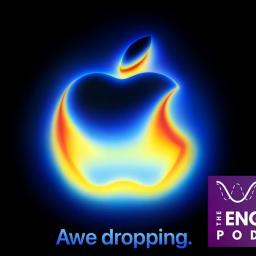 |
on (#6ZTFR)
We're just days away from Apple's September 9th iPhone 17 event, and the hype seems practically nonexistent. Did the many (many) leaks splash cold water on an enthusiasm, or are we just tired of annual iPhone events? In this episode, Deputy Editor Nathan Ingraham joins Devindra to discuss why even the rumored iPhone Air isn't really tingling our gadget geek senses. Also, we dive into the final repercussions of the US. v. Google antitrust trial: Turns out Google doesn't have to sell Chrome, or give up much of anything else.Subscribe!
|
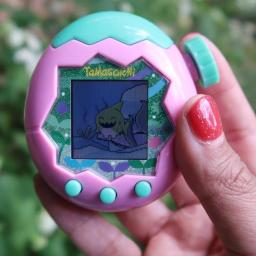 |
by Cheyenne MacDonald on (#6ZTFS)
On a random Saturday in August, I became the omnipotent caretaker of a newly formed planet, one born, according to the lore, from humankind's collective love of Tamagotchis past and present. An egg hatched and a planet sprang forth. Then another egg hatched down on the surface of that planet and a critter sprang forth. In the few weeks since, I've raised half a dozen more creatures across three different virtual habitats, slowly but surely turning my planet into a bustling hub of adorable alien life. Whereas previous Tamagotchi devices felt like they bestowed a personal challenge on players to keep individual characters alive and in their care as long as possible, Tamagotchi Paradise places more of an emphasis on populating, rewarding you for nurturing a revolving door of new characters that you will ultimately release to the peaceful wild. In a sense, Tamagotchi Paradise completely reimagines the classic toy not as a pet-keeping experience, but something more akin to wildlife conservation. It's really cool. Tamagotchi Paradise also introduces a new egg design, with a dial sticking out that has a stopwatch-like button. It's another hefty device and brings back AAA batteries instead of charging via USB-C. The top of the plastic shell flips open to reveal a docking port (a throwback to design from the '90s), where you can physically connect another Tamagotchi Paradise. And the updates don't stop there, since the whole UI has been overhauled. It is a lot of change all at once, and some parts work better than others. I expect this to be a polarizing one among Tamagotchi fans, and a cursory glance at some of the online discussions would suggest that's already the case - but consider me team Paradise. I am super into it. The dial The dial is one of the biggest new features of Tamagotchi Paradise. Its main purpose is to let you zoom into the planet to see all the goings-on there, but it can also be used to scroll through menu options and has a role in some of the games. While it was very exciting to play with for the first few days, the novelty has largely worn off in the month since, and it's just a normal part of using the device now. It does feel nice to spin and click the dial, and I appreciate that as a person who likes to fidget with things. But frankly, it was just a relief to find that it doesn't suck. After the frustration of the flat, not-button buttons on Tamagotchi Pix, I was a bit nervous that the dial would end up being another feature that's more gimmicky than practical, and cause a bunch of headaches. Thankfully, that's not how things have panned out. The dial took a little getting used to, particularly when figuring out how far to spin it to get where I'm trying to go (planet level, the surface, one-on-one with your Tama and into the cells), but now it's smooth sailing. Cheyenne MacDonald for Engadget In at least one way, it's even an improvement. Thanks to the dial, you can finally go back to a menu icon or number/letter you accidentally skipped over, as opposed to pressing through all the rest of the options to get around to the beginning again. It is also still possible to do everything one-handed, though less comfortably than when all you had to deal with were three buttons. Mostly, the dial just works as it's intended to, and I certainly don't hate the touch of whimsy it adds to my interactions with the device. Caretaking Tamagotchi Paradise takes a more gamified approach to raising Tamas than other models, and this makes for slow going when you first get started, as much of what it offers is locked away until you've leveled-up your planet by reaching certain milestones. You'll have some games to begin with, both from the Mini Games section (to earn Gotchi Points) and the "Play" menu (to raise your Tama's happiness), as well as some shopping options, but the bulk of the content is initially walled off. Regardless of whether you have a Land, Sky or Water device, you'll eventually have access to all three of those environments and the characters they can support. These areas exist as different "Fields" on your Tamagotchi planet. But you won't have all three Fields unlocked until you hit Level 6, and that requires raising two Tamas to adulthood. Since that process takes a few days each time, it could be almost a week before you're there. Once you reach Level 10, at which point you're onto your sixth adult Tama, everything is available. It's a bit of a grind, and a slow one at that, but I actually enjoyed how it spaced out the discovery of new things. It reminded me a bit of the Tamagotchi On's unlockable areas. But this leveling system also led me to do things differently than I normally would. On all of the other recent color Tamagotchis, which let you continue caring for characters indefinitely as long as you don't kill them, I'll usually raise each one with the intention of hanging onto it for as long as feels right, be it weeks or months or more. Tamagotchi Paradise, on the other hand, had me raising new characters back to back to back. Only now that I've crossed Level 10 have I started aiming for characters that I feel like I'll want to sit with for a while. Despite the high turnaround, I've found Tamagotchi Paradise to be perhaps the least needy of all Tamagotchi models I've run. Beyond the baby stage, it doesn't feel like I have to be super attentive to keep my Tama alive and happy. That might be a point against it for those who want something more actively demanding, but for me, the relatively easygoing nature of this one has been pretty refreshing. The way Tamagotchi Paradise handles food gathering and feeding feels more forgiving, too. It's very easy to feed your Tama for free (without making it choke down something it doesn't like). You can send your Tamas on daily egg hunts to find food for themselves. You can buy them pre-made dishes from the shop, but you can also use the ingredients they've foraged to cook a meal that will fill them up all the way. Or, they can just consume the raw ingredients. It is great, as is the fact that you can finally have more than three of a given food item in your inventory at a time. Of course, the most important thing about Tamagotchi is the characters you can raise, and Paradise has a lot working in its favor on that front. Fans will recognize several beloved characters from older devices, but there are also a ton we've never seen before, and they're so good. Even the one that's just a straight-up rock is so cute it makes me want to scream. And for the first time, the different care factors - which determine what adult you'll end up with - are visualized, with icons to tell you exactly how many care mistakes you've made, how many times you've filled the happiness meter and more. It takes out the guesswork, not to mention the potential disappointment of not getting the character you wanted and not being entirely sure why. Cheyenne MacDonald for Engadget When you're ready to move on and hatch another egg, you must release your current Tama to the Field, where it'll remain in the background until the space fills up. You can have four released Tamas per Field. After that, the older ones will disappear and be replaced one by one by the new entrants. It is a joy that my old Tamas will stick around after their time, and that I get to see them playing in the virtual wild. But this also brings me to my biggest gripe with Tamagotchi Paradise. While your three Fields may be brimming with Tamas, you can only have one active character to take care of at a time. This feels like a huge missed opportunity, and it was a bit of a letdown to find out after thinking - based on the promo materials - that Tamagotchi Paradise would allow you to simultaneously raise and care for a character in each Field. If that had been true, this would have been the ultimate Tamagotchi, or close to it. I would have also liked to see more complex gene mixing like we've had on other devices, where you could breed two characters to create offspring that were either a delightful or mildly disturbing amalgamation of the parents' traits. Gene mixing on Tamagotchi Paradise only goes as far as body color and eye design, which are then slapped onto the body of one of the existing characters from the pair. It's still making for some fun results, but I wish it went a bit further into mad scientist territory. Customization of the Tamas themselves is pretty limited. You can't name them. You can dress up their environment with decorative items and you can accessorize the planet, but you can't dress up the Tamas. You can, however, change the color and mood of your characters by buying certain snack items with Gotchi Points, which I really like. Doing this helped me create a perfect pink and yellow version of the adorably derpy Elizardotchi, one of my favorite new characters. Is it worth it? Tamagotchi Paradise has a lot going on. It contains a decent amount of games, and they're good ones, with a mix of old and new. All of the Mini Games have multiple difficulty options, so you can up the challenge a bit if you so wish. Setting the game to a harder mode will make your potential reward of Gotchi Points higher, which is always a plus. Every time you harvest enough poop to fuel a rocket (yes, that's a thing), you can travel to different themed Tamagotchi planets. There are seven other worlds to visit, and on each you'll be gifted a couple of special items. While it would have been better if these areas offered a little more to do, like a themed game and a shop, it's still a nice way to keep unlocking new items for a while. There are emergency events that will pop up out of nowhere, briefly upping the stakes. Miss the alert and your planet will get pummeled by meteorites or stampeding birds. In contrast to the overall chillness of the game otherwise, these emergencies make for some real heart-pounding excitement. I love it - even if I felt so bad when I saw the sad, beat-up state of my little Tama after the Dododotchi herd blew through. Paradise also assigns you roughly two dozen "missions" to complete, which are achievements for succeeding at different tasks a certain number of times, like cleaning 500 poops. Similar to the care icons we saw on Tamagotchi Uni, these give you something to keep working toward even after you've unlocked everything the device has to offer. You can even be a completionist about Tamagotchi. Cheyenne MacDonald for Engadget The Connection feature, which requires a second device, is a fun way to swap items and experiment with gene mixing, or just observe how two Tamas will interact. And while there's no Wi-Fi connectivity on this device, you can still get new items in other ways, from off-device to using download codes. The official Tamagotchi website has already released a few of these, and considering we've gotten two years of continued new material for Tamagotchi Uni, I'm hoping to see the same for Paradise. With Tamagotchi Paradise also came Lab Tama, or in-store installations where fans can access exclusive games and items. These don't seem to be particularly widespread, though, so that unfortunately seems like an experience most Paradise owners won't get to take part in. (To the heroes who post these download codes online, thank you for your service). All in all, Tamagotchi Paradise feels fuller than 2023's Uni, especially as the latter existed at its launch before all the downloadable content started coming in. At $45 (if you can find it in stock and at retail price), Tamagotchi Paradise is also less expensive in the US than the Uni, Pix and On, which is a surprising but welcome development. There's a lot of fun to be had with this one, so long as you're open to a little (okay, a lot of) change.This article originally appeared on Engadget at https://www.engadget.com/gaming/tamagotchi-paradise-trades-stressful-virtual-pet-parenting-for-nature-and-tranquility-130049511.html?src=rss
|
 |
by Steve Dent on (#6ZTFV)
NASA, ESA, CSA, and STScI, A. PaIf "chaos is a ladder," then brilliant stars forming from discordant gas and dust are the ultimate example of that. The James Webb telescope has imaged one of the more dramatic stellar nurseries in the galaxy called Pismis 24, showing swirling dust and infant stars in unprecedented detail.The image was captured in infrared light by Webb's NIRCam (near-infrared camera), with false color detail added afterwards. It shows the Pismis 24 star cluster located in the Lobster Nebula around 5,500 light-years from Earth, part of the Scorpius constellation. The heart of the cluster is the star Pismis 24-1 at the top of the image, with the tallest spire in the nebula pointing directly at it. It's actually composed of two stars that can't be resolved by telescopes, collectively around 140 times the mass of the Sun.Below in the dusty area, super-hot stars up to eight times the Sun's temperature live inside the nebula blasting out "scorching radiation and punishing winds," according to ESA. That radiation is actually carving a cave into the wall of the nebula, with streams of hot, ionized gas flowing off the ridges. The white, glowing outline along the highest peaks are wispy veils of gas and dust illuminated by starlight.In nebulae, gas, dust and other materials clump together under the influence of gravity to form denser regions that eventually become massive enough to form stars. Once those stars ignite under fusion and enough of them form, they in turn influence the nebula by ionising hydrogen gas and creating massive solar winds, compressing the dust and creating more stars.The nebula extends well beyond NIRCam's field of view and to give an idea of scale, the tallest spire spans 5.4 light-years from its tip to the bottom of the image. More than 200 of our solar systems could fit into the width of its tip.This article originally appeared on Engadget at https://www.engadget.com/science/space/new-webb-image-shows-star-formation-as-glittering-craggy-peaks-133001953.html?src=rss
|
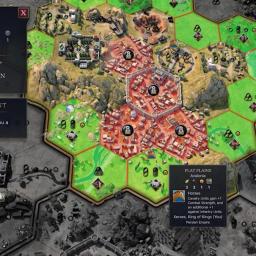 |
by Ian Carlos Campbell on (#6ZSZV)
Firaxis, longtime developer of the strategy series Civilization, is laying off an undisclosed number of staff, Game Developer reports. "We can confirm there was a staff reduction today at Firaxis Games, as the studio restructures and optimizes its development process for adaptability, collaboration and creativity," a spokesperson for the studio's publisher and owner 2K told Engadget. The layoffs follow turmoil at another 2K studio, Cloud Chamber, which is supposed to be developing the next Bioshock game.Some former staff who worked on Civilization VIIand Marvel's Midnight Sons have already shared on social media that they were laid off. Game Developer'ssource claims "dozens of workers" were caught up in the cuts. The 2K spokesperson said it was company policy "to not disclose specific employee numbers related to layoffs and restructuring."The layoffs are surprising only because Take-Two Interactive, Firaxis and 2K's parent company, was still expecting financial growth for the back half of 2025. Despite delaying its hotly anticipated cash cow Grand Theft Auto VI, Take-Two shared in March that it expected five percent growth in revenue and net bookings for the rest of the year, according to Game Developer. While that might suggest jobs should be safe, layoffs are increasingly a feature of game companies' normal business strategies. A game could be a failure or a success, but either way it seems to lead to layoffs.Firaxis' latest game, Civilization VII, was released in February 2025. The game features a new approach to the series' turn-based gameplay, letting players mix and match world leaders and civilizations to their strategic benefit. While it wasn't released to universal acclaim, Firaxis has continued to update Civilization VII since its release with new content and software fixes.Update, September 5, 2025, 9:17AM ET: Added a statement from 2K.This article originally appeared on Engadget at https://www.engadget.com/gaming/civilization-developer-firaxis-is-laying-off-staff-221105604.html?src=rss
|
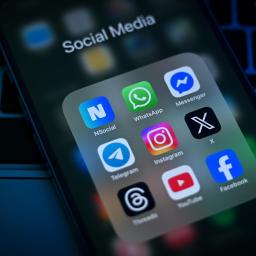 |
by Steve Dent on (#6ZTFW)
The government of Nepal is blocking commonly used social platforms including Facebook, X, Instagram, WeChat, Reddit and YouTube due to noncompliance with a new law requiring them to register with the government, The Associated Press reported. Five platforms including TikTok and Viber that did register in the country were exempted from the ban.Social media companies were asked to provide a local contact, grievance handler and person responsible for self-regulation to avoid a shutdown and many apparently failed to do so. "Unregistered social media platforms will be deactivated today onwards," ministry spokesperson Gajendra Kumar Thakur told Agence France Presse.The Nepalese government recently introduced a directive forcing social media companies to ensure their platforms were well-managed, responsible and accountable. The government said the bill was an effort to curb online hate, rumors and cybercrime. However, it was widely criticized by opponents as a tool for censorship, with some groups calling it a violation of citizens' basic rights."It is not wrong to regulate social media, but we first need to have the legal infrastructure to enforce it. A sudden closure like this is controlling," said Digital Rights Nepal president Bhola Nath Dhungana. Another group, the Federation of Nepali Journalists said the measure "undermines press freedom and citizens' right to information." Also expressing opposition was the New York-based Committee to Protect Journalists.Nepal is the latest government to tighten social media oversight, with countries including the US, Europe and Brazil having done so to varying degrees of late. Nepal's neighbor India has also mandated local compliance officers and takedown mechanisms (and even threatened to jail Twitter employees at one point).This article originally appeared on Engadget at https://www.engadget.com/social-media/nepal-blocks-most-social-media-sites-for-failing-to-register-with-the-government-131512017.html?src=rss
|
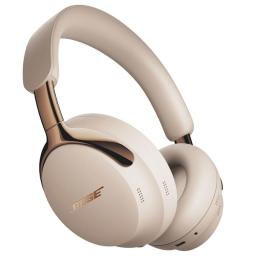 |
by Billy Steele on (#6ZTD6)
Bose announced a refresh of its QuietComfort Ultra Earbuds over the summer and now it's back with an overhaul of its flagship noise-canceling headphones. The company has employed the second-generation moniker once again on the new QuietComfort Ultra Headphones, but this time the list of updates is a bit more substantial. Bose says it made tweaks to audio performance, active noise cancellation (ANC), battery life, power efficiency and more. Surprisingly, the company managed to make its upgrades without raising the price. The biggest changes for the QC Ultra Headphones come in the sound department. First, lossless audio is now available over wired USB-C connection. Bose says you can expect 16-bit/44.1kHz or 48kHz playback and the setup doubles as a low-latency option for desktop or mobile gaming. When it comes to Immersive Audio - Bose's take on spatial audio that doesn't require specialized content - the company has added a new Cinema mode. By "spatializing and balancing background sound with other audio effects," Bose says it creates a "movie-like experience" thanks to a wider soundstage that's placed in front of the listener. As a result, dialogue clarity is enhanced, which makes Cinema mode an option for podcasts and audiobooks in addition to movies and TV shows. For general listening, the company provides deeper bass at high volume, more natural sounding treble and consistent clarity even when the content is loud. It also reduced the sound created by the ANC tech so that it's less apparent in quieter environments. Bose Speaking of ANC, Bose made the same update here that it did on the QC Ultra Earbuds. In Aware or transparency mode, the headphones better handle sudden changes in environmental noise (like sirens) with smoother changes to noise-canceling levels. On the QC Ultra Headphones, you can now disable ANC completely or manually adjust it to suit your needs. Bose extended the battery life to 30 hours of ANC use or up to 45 hours with noise cancellation disabled. If you opt for that spatial Immersive Audio all the time, you can expect up to 24 hours of use now. If you run out of juice before you want to take a break, the QC Ultra Headphones can be charged during use via the USB-C port. To help you conserve battery power, the headphones will now enter a standby mode when you lay them flat or fold them into their case. And when the time comes to resume listening, improved wear detection automatically turns on the headphones when they're placed on your head. Lastly, you'll notice that Bose opted for polished metal on the headband where the yokes used to have a flat finish. There are also two new colors: Driftwood Sand (tan) and Midnight Violet (purple). The second-gen QuietComfort Ultra Headphones are available for preorder today from Bose in black, white, tan and violet color options. The price remains $449, same as the original version, and general availability is scheduled for October 2. This article originally appeared on Engadget at https://www.engadget.com/audio/headphones/bose-overhauls-the-quietcomfort-ultra-headphones-with-lossless-audio-and-longer-battery-life-130018894.html?src=rss
|
 |
by Alessandro Fillari on (#6ZTD7)
Kirby is a uniquely wholesome Nintendo character, yet his games often have a quirky mean streak to them. They're all about letting players absorb enemies and take on some wild powers to tear through vibrant stages with reckless abandon. That's especially true with Kirby Air Riders, the long-awaited sequel to the GameCube classic racing game, Kirby Air Ride. Much like the original, it's a fast-paced racing game starring Kirby and friends as they race through visually striking locales - it also happens to be one of the most chaotic racing games I've played in quite a while.At PAX West 2025 in Seattle, I spent an hour playing Kirby Air Riders, reacquainting myself with the approachable yet surprisingly deep mechanics from the cult-favorite 2003 racing game. It's certainly interesting to see game director Masuhiro Sakurai follow up Super Smash Bros. Ultimate with a Kirby racing game. Still, after playing Air Riders, this racer carries that similar 'go-for-broke' energy that runs deep in his previous games.Like the original game, you race through a variety of stages inspired by the Kirby series. The sequel takes things further with an expanded roster of Kirby characters, such as Meta Knight and King Dedede, each with their own unique skills and stats as racers. While you race through traditional tracks, Air Riders - much like the original - also opens up free-for-all action stages and mini-games that test your skills in drifting, gliding, and the classic ability of sucking up to gain new powers.Kirby Air Riders totally doubles down on what made the original so unique, and that's what makes it such an incredibly bizarre take on a racing game. In many ways, Air Riders does to racing games what Smash Bros did for the fighting genre - injecting non-genre-conforming systems and concepts that may seem out of place for the type of game it wants to be.However, playing Kirby Air Riders can take some getting used to, especially considering its fairly limited control scheme. Much like the original, acceleration happens automatically, and the game instead has you focus on managing movement and momentum with the control stick and a single button to engage boosts - and that's all you need for controlling your chosen racer's vehicle. But therein lies the nuance of playing; by managing momentum and speed, you can engage drifts and power spin attacks to overcome rivals on the track.NintendoIt pays to be aggressive in Kirby Air Riders, as you'll gain speed by successfully landing attacks on enemies. A particular racer I used often was Return to Dream Land's Magolor, who could sprout ground spikes after landing from jumps. The sequel even expands upon the offensive nature of Air Riders with a new special ability button, which activates character-specific attacks after filling a meter.I was really taken aback by how fast and chaotic races can get, and I found myself getting caught off guard by how diabolical the other rivals can get, unleashing attacks and snatching victory in a pinch. In fact, I closed two races in 2nd place back-to-back in the final second due to King Dedede engaging their vehicle's boosts at the right time. In that sense, it took me some time to come to grips with the game's rapid pace and how quickly things can turn against you.This was especially true with the returning City Trial mode, which is essentially Kirby Air Riders' take on the classic kart-racer battle mode in the vein of Mario Kart 64 or Twisted Metal. In City Trial, players and CPU characters enter a mad dash to collect power-ups and upgrade their vehicles in a large open area, which culminates in themed mini-games to decide the final winner.It took me some time to understand the larger goal of City Trial, as it felt like getting swept up in a colorful mosh pit - one where other players can snatch your vehicles. This battle mode quickly becomes extremely hectic and the dynamic events lead to some truly bizarre scenarios, such as bombs raining down on the arena, which can send players scrambling. City Trial is a fun, mini-open-world to explore that features a set of secrets to find, and I really took a liking to just how much is packed into these events.It took me some time to really get into the groove of Kirby Air Riders and its pretty ruthless approach to action-racing - and this was after spending 20 minutes running the generous tutorials that explained the systems at work. I still liked the sheer spectacle of it all.Once I found my flow within the chaos, it really helped to bring Kirby Air Riders into focus for me, and I really appreciated the over-the-top spectacle that it is as a racing game. It's a very different type of racing that sets itself apart from Mario Kart World and other games of its kind. In fact, there are aspects of Kirby Air Riders that I still don't quite understand. OK with that because I just had so much fun trying to go with the flow.Kirby Air Riders will be released on November 20, 2025 on the Nintendo Switch 2.This article originally appeared on Engadget at https://www.engadget.com/gaming/nintendo/kirby-air-riders-hands-on-123040486.html?src=rss
|
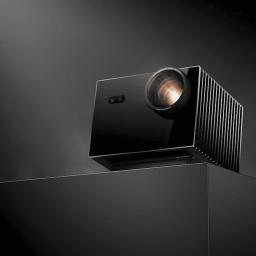 |
by Ian Carlos Campbell on (#6ZTD8)
After a successful Kickstarter campaign, Valerion is formally announcing its new premium projector, the VisionMaster Max, at IFA 2025. The boxy little projector offers improved contrast and brightness, but the feature that should be most interesting to home theater aficionados is how it tries to address the "rainbow effect" common in some cheaper projectors.Cheaper DLP projectors sometimes display stuttery strobes of color when the projector's color wheel is forced to quickly shift between colors during fast-paced scenes. While these doesn't necessarily impede watching a movie or TV show, the rainbow effect can bother sensitive projector owners. The VisionMaster Max attempts to address the problem with what Valerion calls "Anti-RBE Technology" that "reduces rainbow effects by 99.9 percent." The company pulls this off by using software to blend the individual color sequences of whatever you're watching faster than the human eye can perceive, creating what looks like a seamless image.ValerionValerion says the VisionMaster Max also has an upgraded native contrast ratio of 5,000:1 and an AI-assisted "Enhanced Black Level (EBL)" contrast of 50,000:1 for improved depth and details in shadows. Valerion's dramatically named "NoirScene Dark Field Engine System" mixes stable luminance from a fixed iris aperture and an EBL algorithm to offer deeper blacks with less need for calibration. Combined with the VisionMaster Max's up to 3,500 lumens of brightness, it makes the projector even more usable during day or night.The VisionMaster Max also carries over the adjustable lens system from some of Valerion's other projectors, offers support for Gigabit ethernet and Wi-Fi 6E and runs Google TV. Despite favoring Google's home theater OS, Valerion guarantees you can fully integrate the VisionMaster Max with Google Home, Apple HomeKit, Amazon Alexa, Control4 and Crestron smart home systems.If that all sounds good, just make sure you're comfortable paying for a premium experience. Valerion says the VisionMaster Max will be available in October 2025, starting at $4,999.This article originally appeared on Engadget at https://www.engadget.com/home/home-theater/valerion-launches-new-premium-projector-with-anti-rainbow-effect-technology-120058357.html?src=rss
|
 |
by Mariella Moon on (#6ZTD9)
OpenAI is gearing up to start the mass production of its own AI chips next year to be able to provide the massive computing power its users need and to lessen its reliance on NVIDIA, according to the Financial Times. The company reportedly designed the custom AI chip with US semiconductor maker Broadcom, whose CEO recently announced that it has a new client that put in a whopping $10 billion in orders. It didn't name the client, but the Times' sources confirmed that it was OpenAI, which apparently doesn't have plans to sell the chips and will only be using them internally.Reuters reported way back in 2023 that OpenAI was already exploring the possibility of making its own AI chips after Sam Altman blamed GPU shortages for the company API's speed and reliability. The news organization also previously reported that OpenAI was working with both Broadcom and Taiwan Semiconductor Manufacturing Co. (TSMC) to create its own product. The Times didn't say whether OpenAI still has an ongoing partnership with TSMC.After GPT-5 came out, Altman announced the changes OpenAI is implementing in order to keep up with "increased demand." In addition to prioritizing paid ChatGPT users, he said that OpenAI was going to double its compute fleet "over the next 5 months." Making its own chips will address any potential GPU shortages the company may encounter in doubling its fleet, and it could also save the company money. The Times says custom AI chips called "XPUs" like the one OpenAI is reportedly developing will eventually take a big share of the AI market. At the moment, NVIDIA is still the leading name in the industry. It recently revealed that its revenue for the second quarter ending on July 27 rose 56 percent compared to the same period last year, and it didn't even have to ship any H20 chips to China.This article originally appeared on Engadget at https://www.engadget.com/ai/openai-is-reportedly-producing-its-own-ai-chips-starting-next-year-113924707.html?src=rss
|
 |
by Mat Smith on (#6ZTDA)
reMarkable is making a move away from its giant e-ink slate. The new Paper Pro Move is a smaller iteration with a 7.3-inch display the same size as a reporter's notepad. The idea is an eink device you can write and edit on while on the move. Hence the name.EngadgetThere are some drawbacks, however. With the Move, the only way to write and edit typed text is with the on-screen keyboard. Bigger reMarkable devices can connect to a companion keyboard. Engadget's Daniel Cooper spent some time with the new slate. There's a lot to like, but it's a different proposition to past reMarkable Papers.The Paper Pro Move is available to order today, priced at $449 with a stylus included. Meanwhile, paper notepads cost a buck fifty. They're not compatible with keyboards either.- Mat SmithGet Engadget's newsletter delivered direct to your inbox. Subscribe right here!The news you might have missed
|
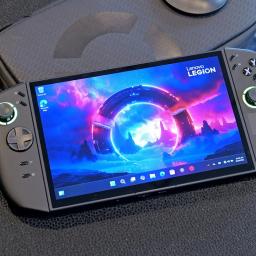 |
by Sam Rutherford on (#6ZT5H)
At the beginning of the year, Lenovo gave us an early design preview of its next flagship gaming handheld - the Legion Go 2. Today, at IFA 2025, the company is fleshing out the rest of the system with more details regarding its specs, price and availability.In terms of its overall appearance, not much has changed on the outside of the Legion Go 2. It has the same general shape and detachable controllers as the preview model, alongside an 8.8-inch OLED with a variable 144Hz refresh rate and VESA HDR TrueBlack 1000 certification. Lenovo has kept the ability to use the right controller as a vertical mouse (aka FPS mode) when paired with the handheld's included puck/stand. And as before, you still get Hall Effect joysticks, a built-in touchpad and kickstand and dual USB 4 ports.Sam Rutherford for EngadgetThe only major change from what we saw in January is slightly different paint colors on elements like its shoulder buttons. That said, I do appreciate that unlike a lot of its rivals (aside from the Steam Deck), Legion Go 2 still comes bundled with a case, just like its predecessor. On the flipside, one thing I wish Lenovo had changed is the detachment process for Legion Go 2's controllers. Like before, you can press a button in back before sliding each joypad off a small hidden rail. And while it works, after using the new magnetic system for the Switch 2's Joy-Con, doing the same thing on the Legion Go 2 just feels clunky.Meanwhile, the Legion Go 2's internals are where most of its upgrades have gone. The handheld can now be equipped with up to an AMD Ryzen Z2 Extreme chip, 32GB of RAM and 2TB of PCIe Gen 4 storage. And if that's not enough, there's also a microSD card reader. But perhaps the most tantalizing improvement may be its battery life, as the Legion Go 2 comes with a 74Whr battery that's 50 percent larger than the 49.2 Whr cell in the original.Unfortunately, I only had a brief time with the demo unit and as it didn't have a lot of games already installed (especially more resource-intensive ones), so I couldn't really gauge how much better its performance was compared to the original model. However, I did notice that Lenovo's Legion Space app felt much snappier and more polished, though it probably won't be as seamless as the native game integration and new UI that's coming on the ROG Xbox Ally.All told, the Legion Go 2 is shaping up to be a more refined, powerful and longer-lasting follow-up while retaining pretty much every major good feature from its predecessor like a big OLED screen, detachable controllers and solid connectivity. Granted, it's still quite chunky even with its curvier and more streamlined design, but that was always going to be the case considering its large 8.8-inch display. So if you can handle a Windows-based handheld (sorry SteamOS fans) that's on the heftier side, this is one worth keeping an eye on.Sam Rutherford for EngadgetBut here's the potential catch: the Legion Go 2 may be substantially more expensive too. It's expected to go on sale sometime in October starting at $1,049, which is a significant jump up from the $700 base price of the original (let alone what it's going for now, which can be as low as $550 depending on discounts). And that figure is likely for a model with a Ryzen Z2 chip, which means anyone who wants one with a more powerful Z2 Extreme processor will need to keep some wiggle room in their budget. So while I appreciate how Lenovo is chasing big performance on a portable gaming machine, the Legion Go 2's price has me appreciating more affordable handheld rivals like the Steam Deck even more than I already do.This article originally appeared on Engadget at https://www.engadget.com/gaming/pc/lenovo-legion-go-2-hands-on-powerful-upgrades-but-with-an-even-higher-price-060052114.html?src=rss
|
 |
by Lawrence Bonk on (#6ZT5J)
Lenovo just announced some new gaming products at IFA, including the Legion Pro 7 laptop. The specs here are impressive. The laptop ships with AMD's newest Ryzen 9 9000 HX series processors and options go all the way up to the Ryzen 9955HX3D.The Windows 11 computer also features NVIDIA GeForce RTX GPUs and purchasers can go up to the RTX 5080. There's a 16-inch 240Hz OLED panel with a 0.08ms response time, which should make for some glorious gaming sessions.LenovoIt can be outfitted with up to 2TB of storage and up to 32GB of RAM. It also incorporates the company's Coldfront thermal technology to keep things cool, which in turn lets gamers "run the highest-demand games at the highest settings." The Legion Pro 7 will be available this November and prices start at $2,400.The company also announced the LOQ Tower 26ADR10 desktop. The specs here are impressive, as the computers are powered by AMD Ryzen 8000 series processors and NVIDIA 50-Series GPUs. It can be topped off with up to 64GB of RAM and 4GB of SSD storage. It'll be available later this month, with a starting price of $1,000.LenovoLenovo even announced a few new gaming monitors at IFA, all of which offer multiple connection options and speedy refresh rates. They will be available in October or November, depending on which model is selected, with prices ranging from $700 to $1,100.This article originally appeared on Engadget at https://www.engadget.com/gaming/pc/lenovos-new-legion-pro-7-gaming-laptop-can-be-outfitted-with-up-to-a-geforce-5080-gpu-060017519.html?src=rss
|
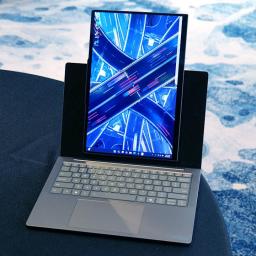 |
by Sam Rutherford on (#6ZT5K)
Lenovo is no stranger to laptops with funky displays. The company has made a notebook with a tri-fold screen, one with a rollable panel and multiple systems with flexible displays. But this year at IFA, Lenovo is testing out yet another new design with its latest concept laptop, and this time it may have created the ultimate doomscrolling machine.Its official name is the ThinkBook Vertiflex Concept and when it's closed, it looks almost exactly like a traditional 14-inch clamshell laptop. But if you look closer, you'll notice that its screen has a secret feature: the ability to rotate 90 degrees into portrait mode. This means you can switch to a taller aspect ratio for tasks like coding, editing photos and videos, or simply browsing your favorite vertically-oriented social media app.Naturally, to enhance its portrait mode capabilities, Lenovo included support for pairing the laptop with your phone via its Smart Connect app, which allows you to mirror or extend the latter's display on a bigger screen or quickly transfer files just by dragging and dropping. In a lot of ways, the Vertiflex Concept feels like the laptop version of one of LG's last phones - the LG Wing - while also sharing a lot of similarities with TVs like the rotating Samsung Sero. And given the continued rise in popularity of vertical photos and videos on social media, it's actually kind of a surprise that it's taken a mainstream PC maker this long to create a laptop like this.On a more practical level, I really appreciate that even with a rotating display, it doesn't feel like there's much of a penalty when it comes to added heft or thickness. The Vertiflex Concept weighs just three pounds and measures 0.7 inches thin, which isn't far off from what you'd get from a typical 14-inch ultraportable. And while Lenovo hasn't provided much in the way of hardware specs (this is a concept device after all), I noticed that the laptop does feature a healthy number of connectivity options, including two USB-C ports, one USB-A connector, a full-size HDMI jack, 3.5mm audio and a microSD card reader.Now, Lenovo has shown off more concept devices than practically any other major OEM in recent history, so of course, the Vertiflex wasn't the only prototype the company had on display for IFA 2025. There was also the Smart Motion Concept, but that felt less impactful because instead of being a standalone product, this thing is merely a laptop stand. It uses the sensors on whatever it's connected to to track your face and automatically reposition your laptop's screen in the right position.The Lenovo Smart Motion Concept and the case for its optional gesture control ring. Sam Rutherford for EngadgetThe idea is that if you're making a presentation, the stand allows your laptop to better keep your face in frame while also making sure its mics and speakers are pointed in the optimal direction. Alternatively, if you'd rather control the stand yourself, the device can be paired to a ring with gesture support. Finally, Lenovo says the Smart Motion concept also has some features to do things like help you maintain ergonomically friendly postures.However, as both products are experimental devices, there's no word on whether Lenovo will turn these into proper retail offerings. But if either the Vertiflex or Smart Motion concepts strike your fancy, you might want to say something (maybe on social media for the social-media focused laptop) to give Lenovo a bit of extra encouragement.This article originally appeared on Engadget at https://www.engadget.com/computing/laptops/lenovos-latest-laptop-concept-might-be-the-ultimate-doomscrolling-machine-060000162.html?src=rss
|
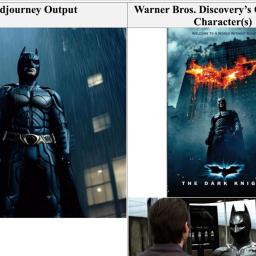 |
by Mariella Moon on (#6ZT4B)
Warner Bros. Discovery has filed a lawsuit against popular AI image generator Midjourney, accusing it of stealing and exploiting its intellectual properties. The complaint revolves around the AI tool's ability to generate images and videos of Warner Bros.' popular fictional characters, including Superman, Batman, Wonder Woman, Scooby Doo, Bugs Bunny and his friends from Looney Tunes. "Midjourney thinks it is above the law," the company wrote in its lawsuit. It said that the image generator sells a commercial subscription service powered by AI technology that was illegally trained using its copyrighted works.The company argued that Midjourney has the technology to prevent users from generating images of the characters it owns. It apparently refused to generate videos based on Warner Bros.' properties when it first launched its video model. But within the past couple of weeks, it allegedly removed those protections and told its users that they would encounter "fewer blocked jobs." The ability to generate Warner Bros.' characters are a clear draw for its subscription service that costs $10 to $120 a month, the media conglomerate said. "It is hard to imagine copyright infringement that is any more willful than what Midjourney is doing here," the plaintiff added. "Midjourney has prioritized and sought to preserve the hundreds of millions of dollars it earns annually from its service by doubling down on its theft of copyrighted works."In the complaint, the company gave several examples of Midjourney-generated images and video stills next to images and screencaps of its movies and shows. The image above, for instance, shows Midjourney's output from the prompt "Batman, screencap from The Dark Knight." next to actual promotional materials from the Christian Bale-led movie. Further, generic prompts like "classic comic book superhero battle" could lead to output with WB characters even if they're not specifically mentioned.Midjourney is already facing a copyright infringement lawsuit filed by Disney and Universal Studios back in June. They accused the AI service of "help[ing] itself to countless" copyrighted works to train its models and for infringing on their copyright by allowing users to generate images of characters from Star Wars, Shrek, The Simpsons and Despicable Me, among other properties.Warner Bros. Discovery is now asking the court for statutory damages of "up to $150,000 per infringed work by virtue of Midjourney's willful infringement." We've reached out to Midjourney and will update this post when we hear back.This article originally appeared on Engadget at https://www.engadget.com/ai/warner-bros-discovery-is-suing-midjourney-for-copyright-infringement-035850831.html?src=rss
|
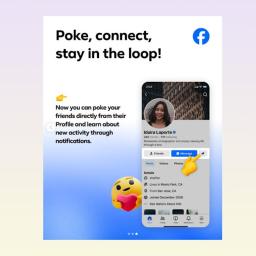 |
on (#6ZT22)
Meta currently has lots of priorities Mark Zuckerberg likely never would have imagined back in the early days of Facebook. The company has pivoted from social networking to the metaverse and, most recently, to AI. But somehow, one of its earliest - and most useless - features has not only survived but is apparently getting a revamp. I'm talking, of course, about the poke, which Meta is once again trying to revive.The company is making the storied feature easier to find by adding pokes back to user profiles in the Facebook app, according to a post it shared on Instagram. And you can track all poking-related activity between you and your friends at facebook.com/pokes. It even looks like there's a Snapchat-streak like aspect where different emojis appear based on how many pokes have been exchanged.Just in case you weren't on Facebook two decades ago, "poking" was something of a novelty in the early days of the social network. At the time, there weren't that many features for interacting with your friends. You could leave comments on their profile and ... you could "poke." The feature never really did anything, but depending on who it came from it was considered something between creepy or flirty. As Meta notes in its Instagram post, poking never really went away, but it was de-emphasized over the years and has been largely forgotten by users.But the company has for some reason been trying to get poking to make a comeback for a while now. Meta said last year the feature was "having a moment" and that there had been a 13x spike in pokes after the company began surfacing the feature in the Facebook search bar. Now, it seems Meta is trying to build even more momentum for it, presumably for the current generation of younger Facebook users.Mark Zuckerberg said earlier this year he wants to bring back more "OG" Facebook features like... being able to find content posted by your actual friends. And it's hard to get more "OG Facebook" than poking. Meta has also been on a years-long mission to win over "young adults," so it might see the jokey feature as a way to appeal to a generation used to taking their Snap streak extremely seriously.
|
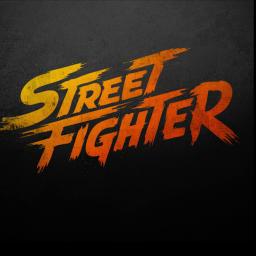 |
by Anna Washenko on (#6ZSZT)
The new Street Fighter movie has been given a release date of October 16, 2026. Kitao Sakurai is directing the project and a few generic plot details have been disclosed. The story will be set in 1993, a nod to the year Street Fighter II was released in arcades, and will have familiar characters from the game uncovering "a deadly conspiracy" in the midst of all their street fighting.It seems safe to expect a fair bit of camp in a Street Fighter project, and that bears out in some of the casting. Andrew Koji will play Ryu; he's had several past action roles such as Bullet Train and TV series Warrior, so that feels like a solid choice. Noah Centineo is taking a break from his work in Netflix rom-coms (notably To All the Boys I've Loved Before and its sequels) to play Ken. Newcomer Callina Liang, who only has a few credits to date, will play Chun-li. David Dastmalchian will be filling the great Raul Julia's shoes (and oversized hat) as M. Bison.Then things really get wacky. Curtis Jackson (who you know as rapper 50 Cent) is playing Balrog and country artist Orville Peck is Vega. Jason Momoa has been cast as Blanka, while WWE wrestler Cody Rhodes has even been chosen to play Guile. This could be absolute gold or absolute trash or possibly both at the same time.This article originally appeared on Engadget at https://www.engadget.com/entertainment/tv-movies/the-new-street-fighter-movie-lands-in-theaters-next-october-222724911.html?src=rss
|
 |
by Anna Washenko on (#6ZSZW)
The White House hosted several tech and AI leaders at an event today centered on teaching artificial intelligence in US schools. Many of the big tech companies - including Amazon, Google, Microsoft, OpenAI and Anthropic - have already issued press releases with their commitments to a pledge from the White House to help "foster early interest in Al technology, promote Al literacy and proficiency, and enable comprehensive Al training for parents and educators." The business commitments include things like cash prizes for students and teachers who use AI in educational ways, and cheap or free access to the companies' AI tools, trainings and certifications. First Lady Melania Trump hosted the gathering.That sounds fine and dandy on the surface. Understanding AI and the limits of what it can and can't do are already important as industries try to adapt to the technology. But considering the current administration has been actively trying to dismantle the Department of Education for being too woke, it seems doubtful that this is going to be a thoughtfully planned or well-reasoned rollout that has the best interests of students at heart. It's unclear if any actual teachers were consulted in the development of these initiatives, or asked for suggestions on how best to prepare students for the sudden rise of AI.For the schadenfreude fans out there, it appears that Trump's former BFF Elon Musk wasn't invited to today's gathering of tech leaders. However Musk insists that he was asked and just couldn't attend. Sure.This article originally appeared on Engadget at https://www.engadget.com/ai/big-tech-signs-on-to-white-house-plan-for-ai-education-in-us-schools-212646999.html?src=rss
|
 |
by Sam Chapman on (#6ZQQ1)
ExpressVPN has tripled its subscription options by switching to a tiered pricing structure, effective today. The new system includes three levels of service, the cheapest offering basic VPN service and the others adding extra features. Each one of those levels - Basic, Advanced and Pro - can be purchased for monthly, yearly or two-year durations. In total, you've now got nine different options for subscribing to ExpressVPN. The company also says legacy plans will remain active "for now," and current customers won't be downgraded. The change is similar to the approach already used by rivals like NordVPN and Surfshark. Previously, ExpressVPN locked feature offerings to the duration of the plan, so the only way to get the full suite of features was to subscribe for 24 months. Now, while longer-term subscriptions will still offer discounts, features depend on your level of subscription instead of how long it lasts. The new tiers roll in some features that were previously part of ExpressVPN's Identity Defender suite, including identity monitoring, credit reports and data removal services. New types of plans will also bump the number of allowed simultaneous connections to as high as 14. Here's what you'll get with each tier. ExpressVPN The Basic plan comes with "core VPN functionality," which includes the Lightway protocol, the Network Lock kill switch and split tunneling on Windows, Android and macOS 10 and below. Basic users will also have access to the blockers for ads and malicious sites, though not the tracker blocker or parental controls. A Basic subscription can be used on 10 devices at once and will cost $12.99 for a month, $74.85 for a year and $97.72 for two years. The Advanced plan raises the device limit to 12 and adds the blockers and parental controls, plus the ExpressVPN Keys password manager. It also gives you three days of eSIM service and adds the Identity Defender features - leak alerts, $1 million of identity theft insurance, data removal and credit monitoring. As was already the case, those ID protection features are available only to users in the United States. An Advanced plan will cost $13.99 for a month, $89.85 for a year and $125.72 for two years. The one-year and two-year plans are both cheaper than the same duration used to cost. Advanced subscribers also get five days of eSIM service and a discount coupon for between 25 and 50 percent off an ExpressVPN Aircove router (it's not currently clear how the exact discount will be determined). Although Basic and Advanced users can pay extra (between $3.99 and $8.99) for a dedicated IP address, it comes standard on a Pro subscription. Pro users additionally get monthly credit reports and data removal, 14 simultaneous connections and an Aircove discount between 50 and 75 percent. A Pro plan costs $19.99 for a month, $134.95 for a year and $209.72 for two years. What ExpressVPN tiered pricing means for VPN shoppers Ultimately, I don't think this new approach will change much about the experience of using ExpressVPN. It's not introducing any new features; I already touched on everything here in my recent ExpressVPN review, so the only difference is how much you'll pay to access the perks. The best news for consumers is that ExpressVPN is now available for significantly cheaper than before. A two-year Basic plan costs about 30 percent less than a two-year subscription used to - though a one-year basic plan is still more expensive than a comparable subscription to Proton VPN or Surfshark. I'm happy to say a Basic subscription is about as strong as ExpressVPN has always been, only missing a few peripheral features. We've recently overhauled our ranking of the best VPNs, including the new information from ExpressVPN - check out the full list in the link. Update, September 4, 2025, 5:03PM ET: This story has been updated to add a statement from an ExpressVPN representative on the features of the Basic plan. This article originally appeared on Engadget at https://www.engadget.com/cybersecurity/vpn/expressvpn-switches-to-multi-tiered-pricing-with-more-feature-options-130016633.html?src=rss
|
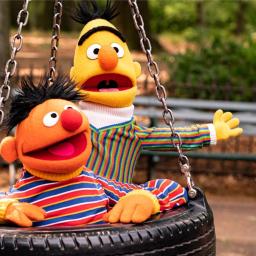 |
by Ian Carlos Campbell on (#6ZSXH)
Sesame Street creator Sesame Workshop and YouTube have announced a new "extended partnership" that will bring episodes of the iconic children's show to the platform and a series of workshops for creators on "how to create content that is entertaining while also promoting learning." This new YouTube partnership joins an existing Netflix deal to stream new episodes of Sesame Street starting in November.According to YouTube, it'll now have a catalog of "hundreds of full episodes" of the show, on top of "content created especially for the YouTube audience" featuring beloved Sesame Street characters. The fact that Sesame Workshop will help train the next generation of kid-friendly entertainers as part of the deal is also a direct acknowledgment that some children know Ms. Rachel before Big Bird. Of course, Sesame Street becoming even more of a presence on the platform fits larger trends. YouTube has firmly established itself as a home for kids entertainment and educational content, and that doesn't seem like it'll change anytime soon.With distribution deals with Netflix and YouTube, Sesame Street seems like it's in a much more stable position than it was previously. The future of the series and its availability through free public broadcasters seemed uncertain after Warner Bros. Discovery opted to end its partnership with Sesame Workshop in 2024. As a beneficiary of government funding, cuts to public media made by the Trump administration also impact Sesame Street. These new partnerships guarantee there'll still be multiple ways to watch the show for free, and it might even reach new audiences in the process.This article originally appeared on Engadget at https://www.engadget.com/entertainment/tv-movies/sesame-streets-new-partnership-with-youtube-will-bring-hundreds-of-full-episodes-to-the-video-platform-203245293.html?src=rss
|
 |
by Anna Washenko on (#6ZSXJ)
Netflix has shared a pair of updates about its animated Tomb Raider show. The second season of Tomb Raider: The Legend of Lara Croft will air on the streaming service on December 11. However, that second season will also be the final one for the project. Legendary Television is behind the show, which premiered in October 2024 on Netflix and stars Hayley Atwell of MCU fame as the titular Tomb Raider.If you simply can't get enough of Lara and her adventures in archeology, you have other options on the way. For viewing, Amazon will begin filming in January for a live action take on the series. Although there's no release window for it yet, we recently learned that Game of Thrones actor Sophie Turner will play the lead. And for gaming, although Crystal Dynamics recently announced some layoffs, it is still working on a new Tomb Raider title.This article originally appeared on Engadget at https://www.engadget.com/entertainment/streaming/netflixs-animated-tomb-raider-series-is-ending-with-its-second-season-193502328.html?src=rss
|
 |
by Sam Chapman on (#6ZSV0)
A new peer-reviewed study alleges that 18 of the 100 most-downloaded virtual private network (VPN) apps on the Google Play Store are secretly connected in three large families, despite claiming to be independent providers. The paper doesn't indict any of our picks for the best VPN, but the services it investigates are popular, with 700 million collective downloads on Android alone.The study, published in the journal of the Privacy Enhancing Technologies Symposium (PETS), doesn't just find that the VPNs in question failed to disclose behind-the-scenes relationships, but also that their shared infrastructures contain serious security flaws. Well-known services like Turbo VPN, VPN Proxy Master and X-VPN were found to be vulnerable to attacks capable of exposing a user's browsing activity and injecting corrupted data.Titled "Hidden Links: Analyzing Secret Families of VPN apps," the paper was inspired by an investigation by VPN Pro, which found that several VPN companies each were selling multiple apps without identifying the connections between them. This spurred the "Hidden Links" researchers to ask whether the relationships between secretly co-owned VPNs could be documented systematically.Starting from the list of the most-downloaded VPNs on Android, the researchers compiled data from each VPN's business paperwork, web presence and codebase and sifted through it for connections. Primarily through identifying suspicious similarities in the code, they were able to sort 18 VPN apps into three groups.Family A consists of Turbo VPN, Turbo VPN Lite, VPN Monster, VPN Proxy Master, VPN Proxy Master Lite, Snap VPN, Robot VPN and SuperNet VPN. These were found to be shared between three providers - Innovative Connecting, Lemon Clove and Autumn Breeze. All three have all been linked to Qihoo 360, a firm based in mainland China and identified as a "Chinese military company" by the US Department of Defense.Family B consists of Global VPN, XY VPN, Super Z VPN, Touch VPN, VPN ProMaster, 3X VPN, VPN Inf and Melon VPN. These eight services, which are shared between five providers, all use the same IP addresses from the same hosting company.Family C consists of X-VPN and Fast Potato VPN. Although these two apps each come from a different provider, the researchers found that both used very similar code and included the same custom VPN protocol.If you're a VPN user, this study should concern you for two reasons. The first problem is that companies entrusted with your private activities and personal data are not being honest about where they're based, who owns them or who they might be sharing your sensitive information with. Even if their apps were all perfect, this would be a severe breach of trust.But their apps are far from perfect, which is the second problem. All 18 VPNs across all three families use the Shadowsocks protocol with a hard-coded password, which makes them susceptible to takeover from both the server side (which can be used for malware attacks) and the client side (which can be used to eavesdrop on web activity).Ultimately, a VPN provider being dishonest about its background and a VPN client running on slapdash infrastructure are symptoms of the same problem: these are apps designed to do something other than keep you safe online. Since all 18 were listed as unrelated products, it's also clear that app stores are not an effective line of defense. The "Hidden Links" paper makes it all the more imperative to never download a free VPN without vetting it first, and to only use free VPNs that are supported by paid subscriptions, like Proton VPN.This article originally appeared on Engadget at https://www.engadget.com/cybersecurity/vpn/researchers-find-alarming-overlaps-among-18-popular-vpns-191828342.html?src=rss
|
 |
by Ian Carlos Campbell on (#6ZSV1)
Honda is preparing to announce its first electric motorcycle with fast charging, based on a new teaser video the company shared on Instagram. The video shows off the new e-motorcycle on test rides in Europe and teases the date, September 16, when Honda will presumably introduce it. Plans to expand Honda's lineup of electric motorcycles have been in the works since at least 2022, when the company announced it would release "10 or more" e-motorcycles by 2025.The new motorcycle is under a wrap of black and white camouflage in the video, but Electrek writes that it shares a striking resemblance to the "EV Fun Concept" motorcycle Honda introduced at EICMA 2024, a motorcycle trade show in Milan. At the time, Honda said the boxy concept was designed to offer "performance equivalent to a mid-sized internal combustion engine (ICE) motorcycle" and be compatible with CCS2 quick chargers, an EV fast charging standard in Europe. It also has "a cruising range of over 100km," according to Honda.HondaLeaning on fast charging is one way the company could address possible range issues on the motorcycle. An electric motorcycle naturally offers less room for batteries than electric cars do. Honda's video doesn't get into any of those nitty gritty details, so we'll have to wait until September 16 to know for sure.One thing that does seem certain is the e-motorcycle's regional availability. Based on the fact the video was shared on Honda's UK Instagram page and specifically mentions it was "tested on European streets," it seems highly unlikely the motorcycle will be available outside of Europe and the United Kingdom.This article originally appeared on Engadget at https://www.engadget.com/transportation/evs/honda-teases-its-first-full-size-e-motorcycle-with-fast-charging-185116652.html?src=rss
|
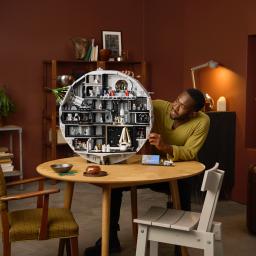 |
by Lawrence Bonk on (#6ZSV2)
LEGO just revealed the Star Wars Ultimate Death Star set, which is a massive beast that includes over 9,000 pieces. The company says it's the largest LEGO Star Wars set ever made. It's also the most expensive LEGO set ever, Star Wars or not. It costs a whopping $1,000.It may set you back around a month's rent, but just look at this thing. It's a legit monster. The set ships with 38 minifigures, including characters like Luke Skywalker, Darth Vader and Emperor Palpatine. It also comes with a stormtrooper figure in a hot tub, which is a nod to the LEGO Star Wars video games.LEGOIt's not a full globe, like the actual Death Star. It's more of a cross-section of the interior. This lets collectors recreate various locations from the movies, like the trash compactor, Palpatine's throne room and Princess Leia's jail cell. There's also a tractor beam control unit, a shuttle hanger and more.This is just the latest high-priced LEGO Star Wars release, proving that there's a real market for this stuff. There's a 6,000 piece recreation of the first ship from The Mandalorian and a detailed version of Luke Skywalker's Landspeeder.While this is the most expensive LEGO set ever made, it's not the largest. The Eiffel Tower recreation includes over 10,000 pieces and costs $630.This article originally appeared on Engadget at https://www.engadget.com/entertainment/tv-movies/the-lego-ultimate-death-star-set-includes-over-9000-pieces-and-costs-1000-183556661.html?src=rss
|
 |
by Anna Washenko on (#6ZSV3)
Belkin unveiled several new products today at IFA 2025. Its lineup included a wall charger and car charger that will be available starting this month, plus four entries in its SoundForm audio collection. But the standout item from the consumer products brand is its new Qi2 25W wireless charging puck.The UltraCharge Magnetic Charger 25W promises to power an iPhone from zero to 50 percent battery in just 30 minutes. It also has some clever design choices, such as a kickstand so you can charge a phone on a tabletop and still have the screen be visible. The kickstand is collapsible and could also be used as a PopSocket-style phone grip, although the puck's own charging cable is 6.6 feet, so you can't wander too far while using it. The charger also boasts Belkin's ChillBoost passive cooling tech to reduce heat buildup and protect the battery. The UltraCharge Magnetic Charger 25W will be available in October 2025, and although its US prices haven't been set, the UK retail cost is 30.The zippy Qi2 charging standard has been rolling out to more and more mobile devices this year. Several Android brands, which had historically not offered built-in support for that standard, have even been jumping on the Qi2 bandwagon.This article originally appeared on Engadget at https://www.engadget.com/mobile/smartphones/belkin-unveils-qi2-magnetic-charger-at-ifa-2025-180647711.html?src=rss
|
 |
by Andre Revilla on (#6ZSV4)
TCL has announced the QM9K, its latest flagship QD mini LED television series. The QM9Ks will be the first panels in the industry to feature Gemini on Google TV, a new feature that we first learned about at the start of this year.TCL/GoogleUsing the standard "Hey Google" voice prompt, viewers will be able to find a movie or TV show, ask questions using natural language about any topic and even control smart home products that are synced through Google Home. Google TV on the QM9K also supports the creation of custom AI screensavers based on descriptions or prompts provided by users.The TVs will feature an mmWave sensor - a form of radar used to detect if a person is in front of the panel - that will wake the devices, allowing users to engage with Gemini completely hands-free. Users will have the option of customizing distance settings and hours of operation for the wake sensor.Aside from breaking new ground in software, the QM9K series features a "Zero Border" edge-to-edge WHVA panel, which promises excellent color accuracy and a bezel-less design.The TVs have up to 6,000 precise dimming zones for deep contrast - up to 57 percent more than on the QM8K, the other contenders in TCL's "Ultimate Series." The QM9K is set to deliver up to 6,500 nits of peak brightness in HDR, a 30 percent increase over its predecessor. The panels run from 65" to 98", and audio by Bang & Olufsen rounds out the premium sets.The TCL QM9K will be available at Best Buy and select regional retailers later this month.This article originally appeared on Engadget at https://www.engadget.com/ai/the-first-tvs-with-gemini-built-in-arrive-later-this-month-175029927.html?src=rss
|
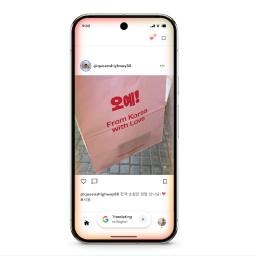 |
by Lawrence Bonk on (#6ZSRR)
Google's Circle to Search tool just got a bit more useful, as it can now continuously translate text while scrolling. Until now, people had to restart the process every time the content on the screen changed. The update ensures the translation feature will keep on ticking along.Google says this is great for getting "more context for social posts from creators who speak a different language" or when browsing "menus when you're booking restaurant reservations while traveling abroad." Just tap the "Translate" icon and look for the menu option "scroll and translate."This update not only keeps the translation tool going as you scroll, but it even keeps working when switching to another app. Google says "there's no interruption" in these cases, which sounds pretty darned useful to me.The update is rolling out now to Android users, but Samsung Galaxy devices are getting it first. Everyone else will have to wait a little bit.This is just the latest update for Circle to Search. The tool also now lets users conduct one-tap actions on phone numbers, emails and URLs.This article originally appeared on Engadget at https://www.engadget.com/ai/googles-circle-to-search-can-now-translate-text-as-you-scroll-171555663.html?src=rss
|